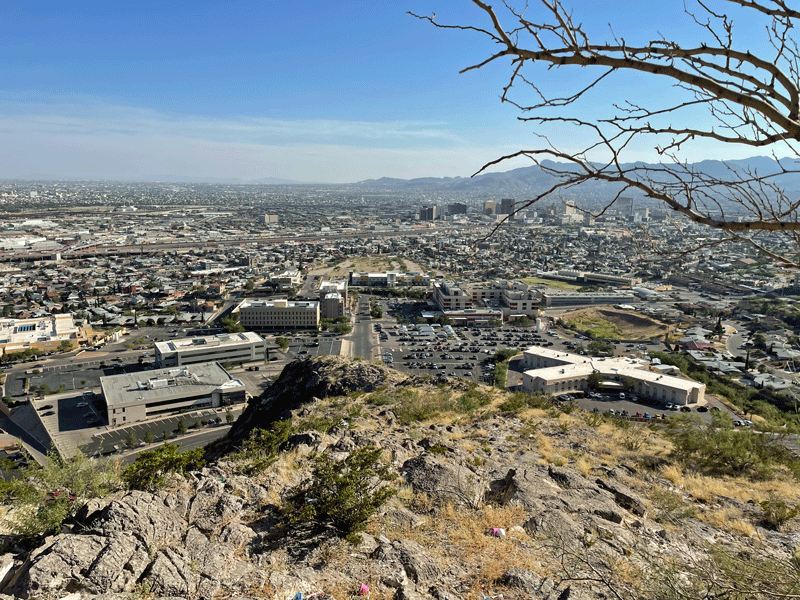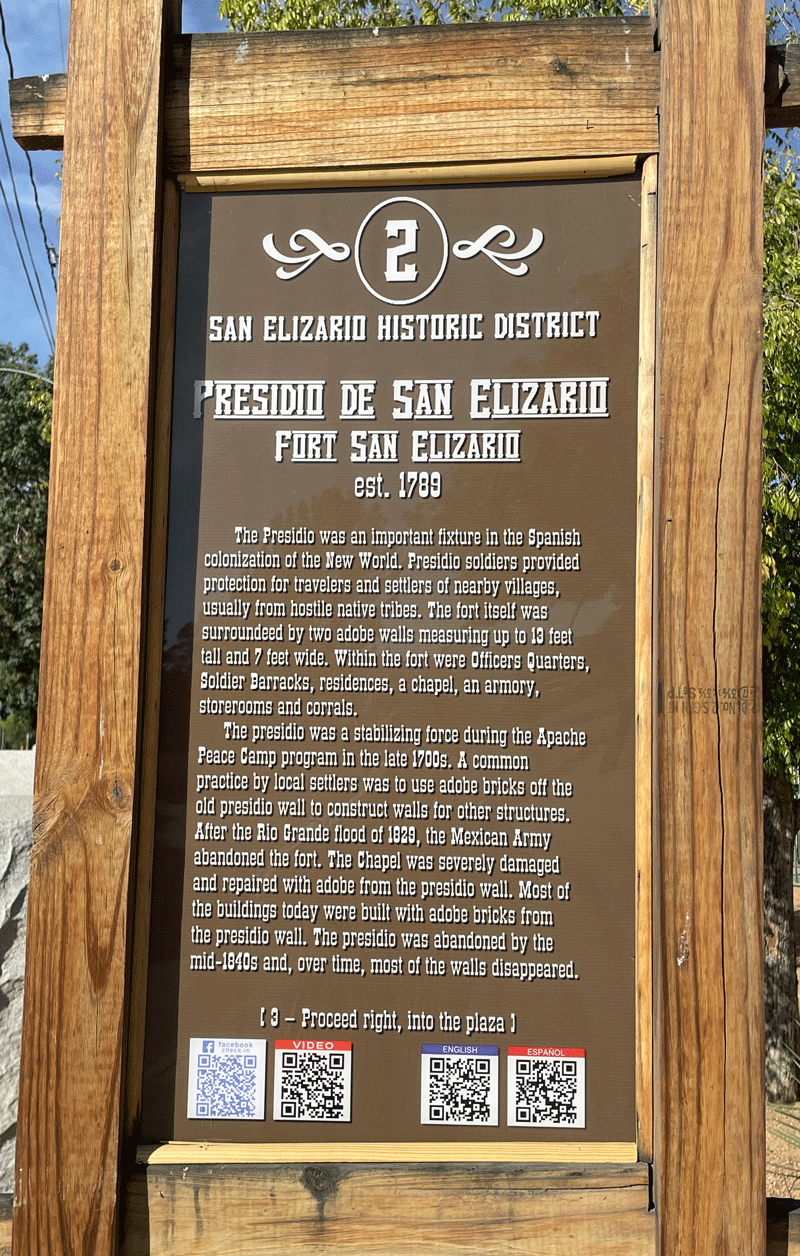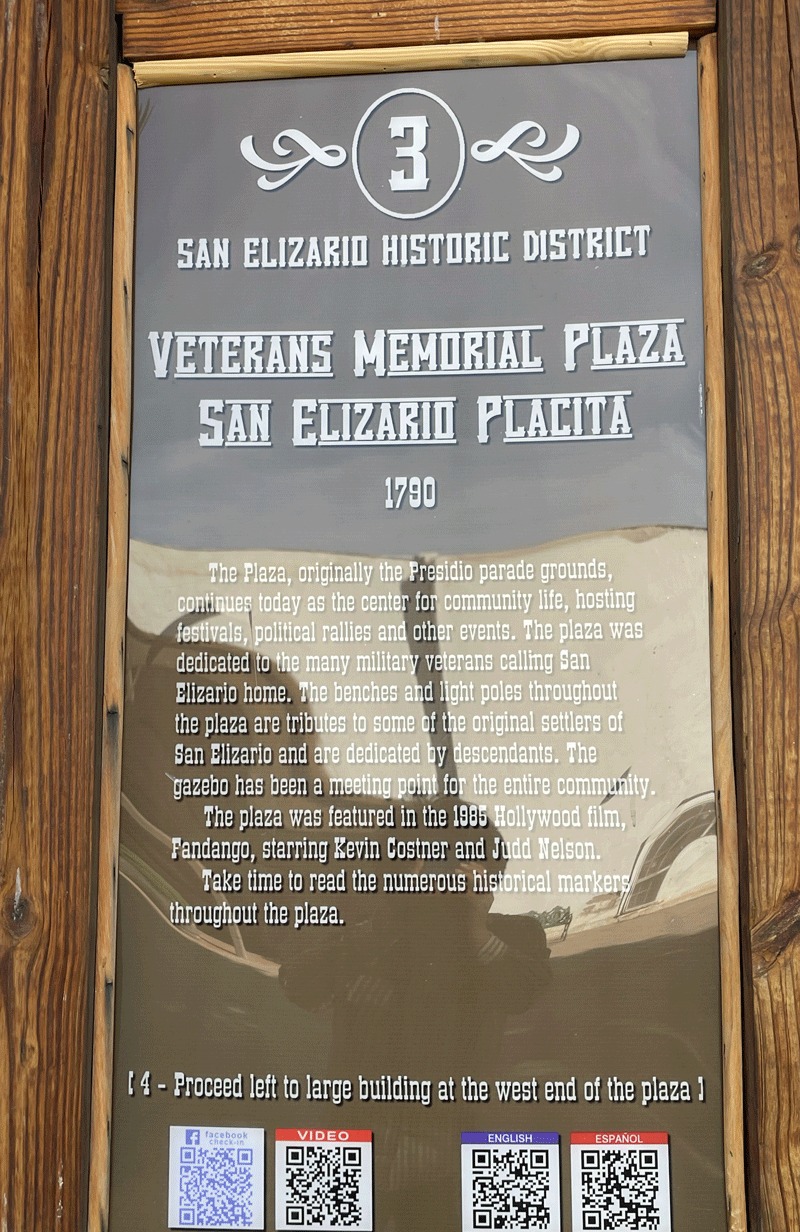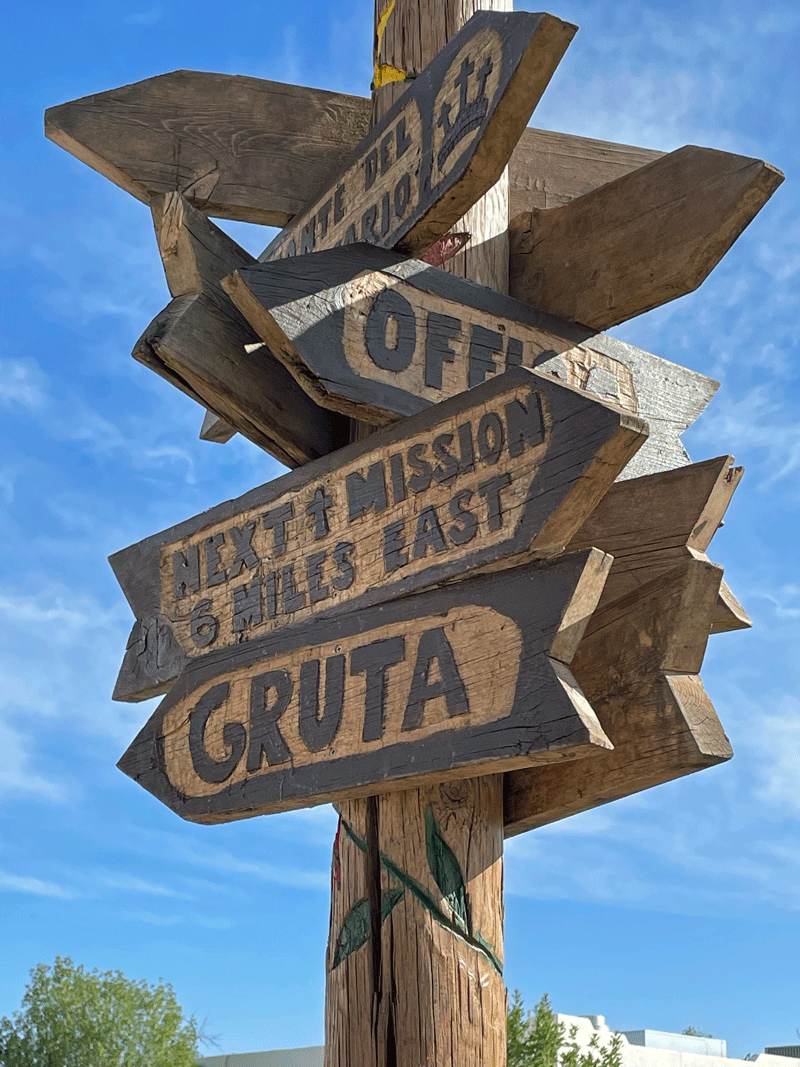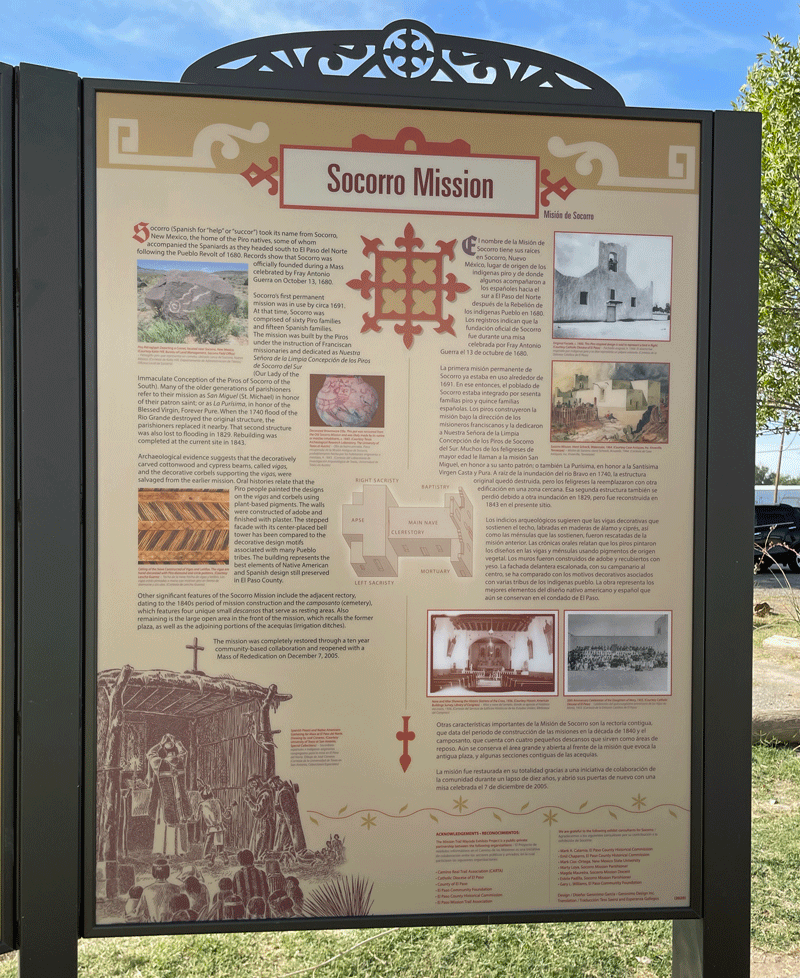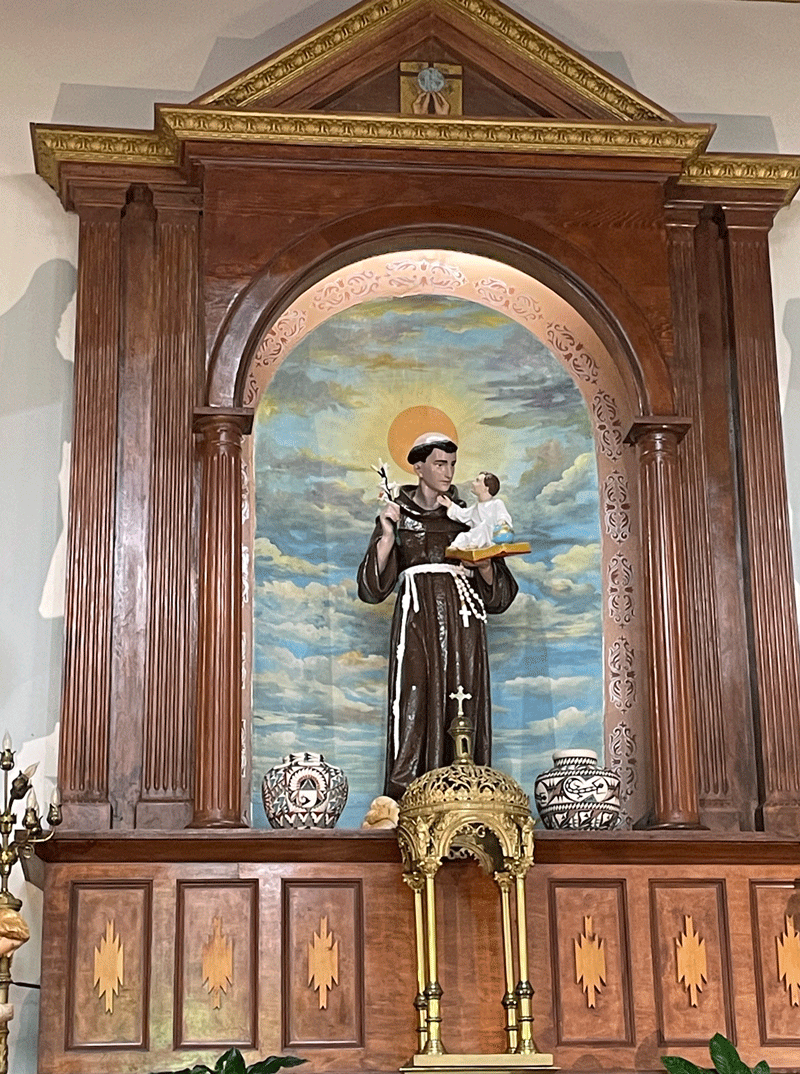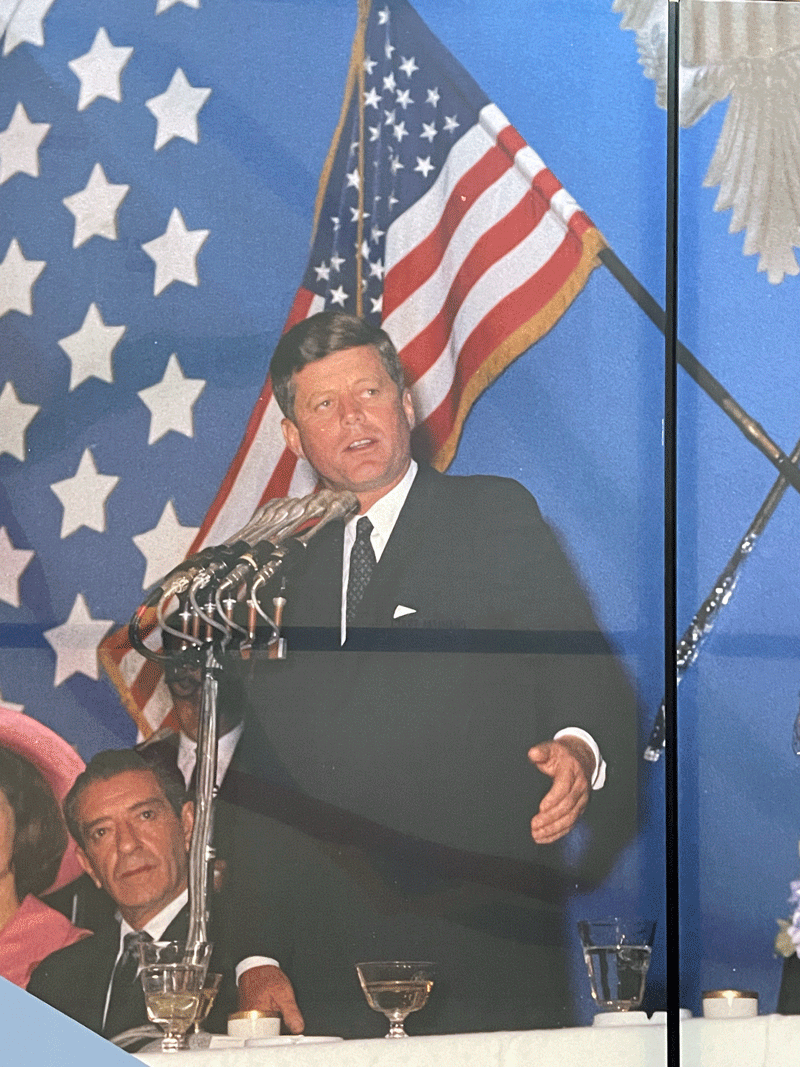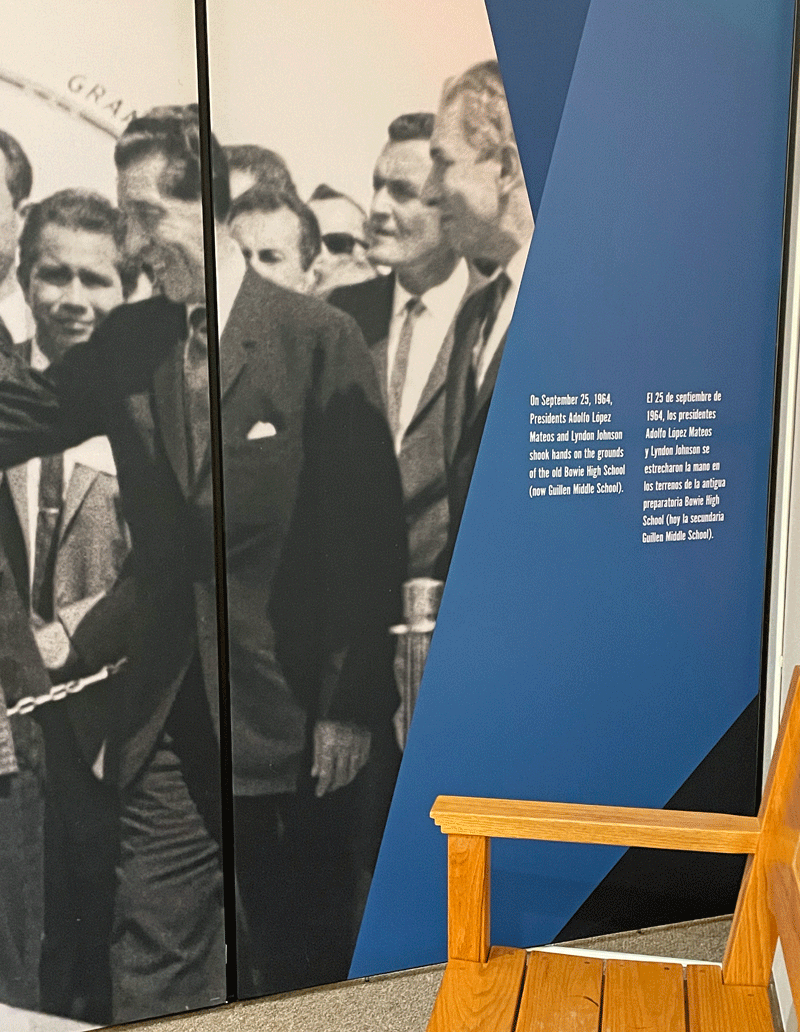
Bấm mũi tên nghe "Islands in the stream" của Bee Gees do Kenny Rogers và Dolly Parton
Baby when I met you there was peace unknown You do something to me that I can't explain Tender love is blind Islands in the stream I can't live without you if the love was gone But that won't happen to us and we got no doubt |
No more will you cry Islands in the stream Islands in the stream Islands in the stream Islands in the stream |
Thành Phố El Paso, Texas
- Thành phố El Paso nằm ở phía cực tây của tiểu bang Texas. Phía bắc giáp với tiểu bang New Mexico, phía tây nam giáp với thành phố Ciudad Juárez của nước Mexico.
- El Paso với dân số khoảng 850,000 là thành phố lớn thứ sáu của tiểu bang Texas và được coi là một trong 10 thành phố an toàn nhất của Hoa Kỳ.
Gọi là "El Paso" vì khi người Tây Ban Nha đi khai khẩn con đường từ phía nam lên phía bắc, qua con sông lớn Rio Grande, tới khu vực này họ cho là "cửa ngõ " để tiến về phương bắc mà ngày nay là New Mexico. Coi hình dưới.
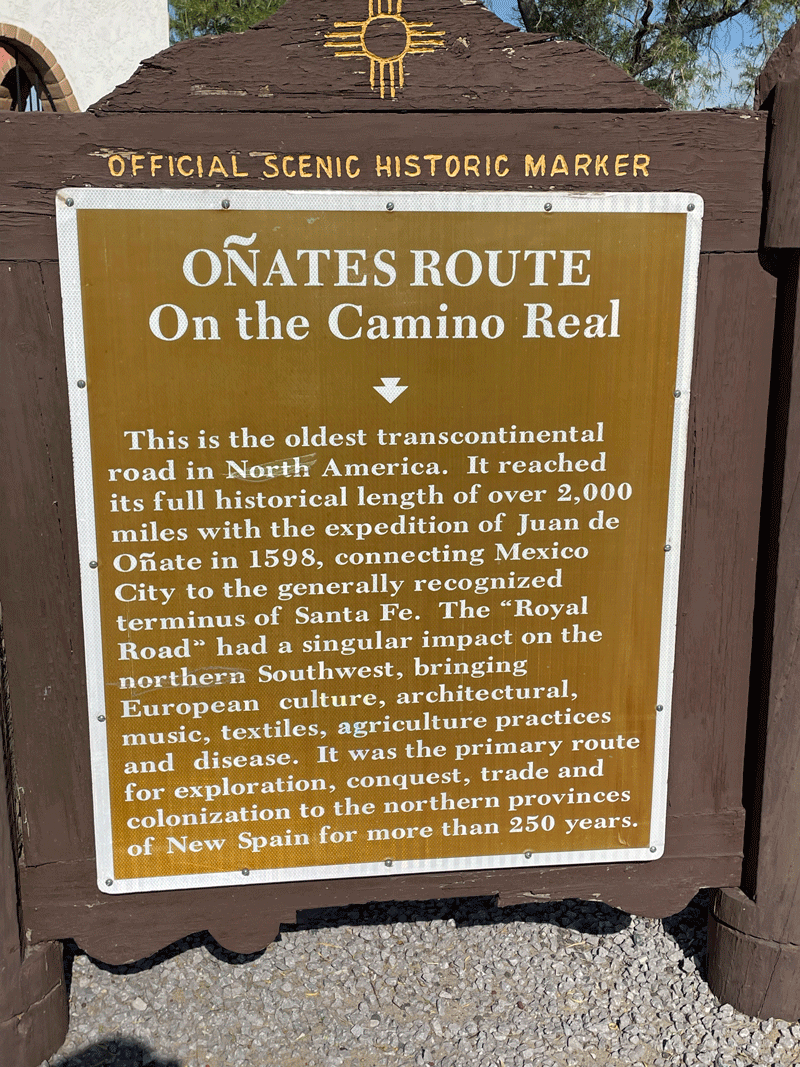
Scenic Drive
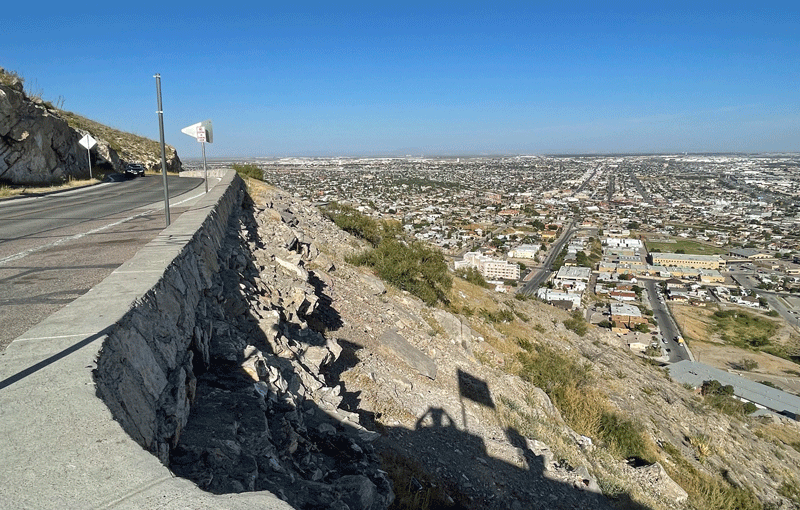
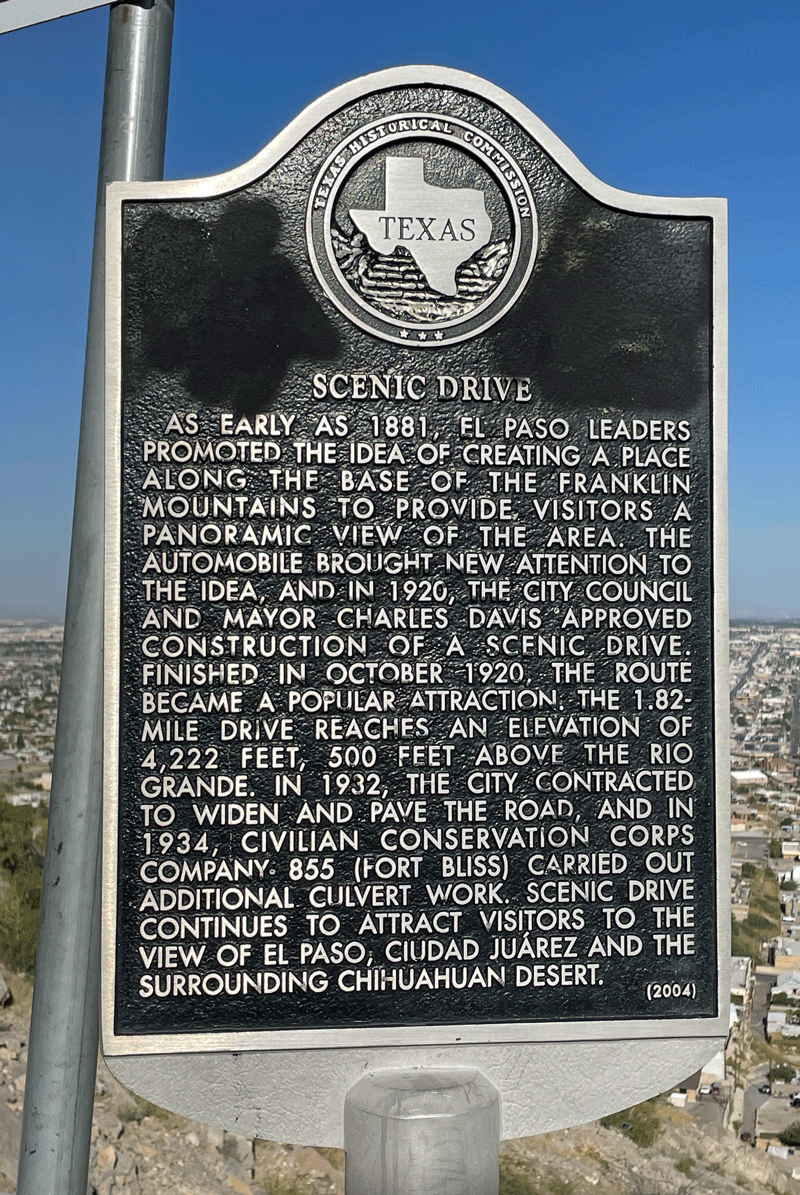
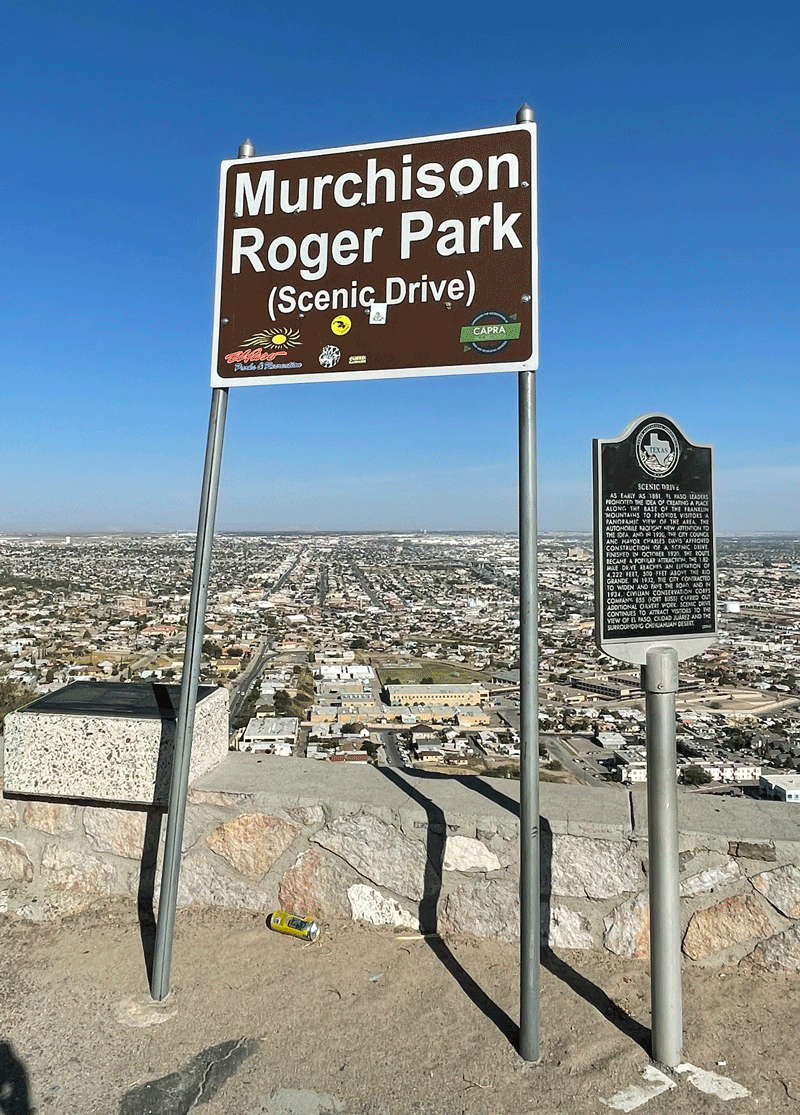
Từ điểm này hay xuống công viên bên dưới, du khách có thể nhìn ngắm được hai thành phố El Paso và thành phố Juárez.
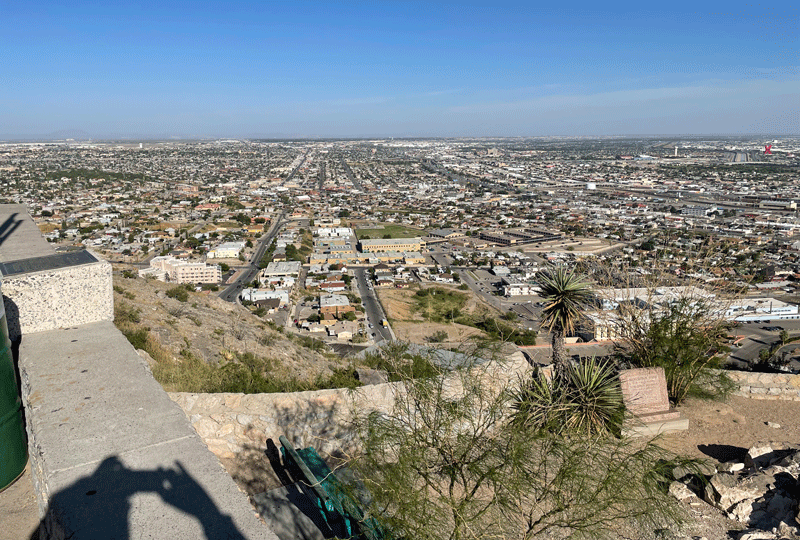
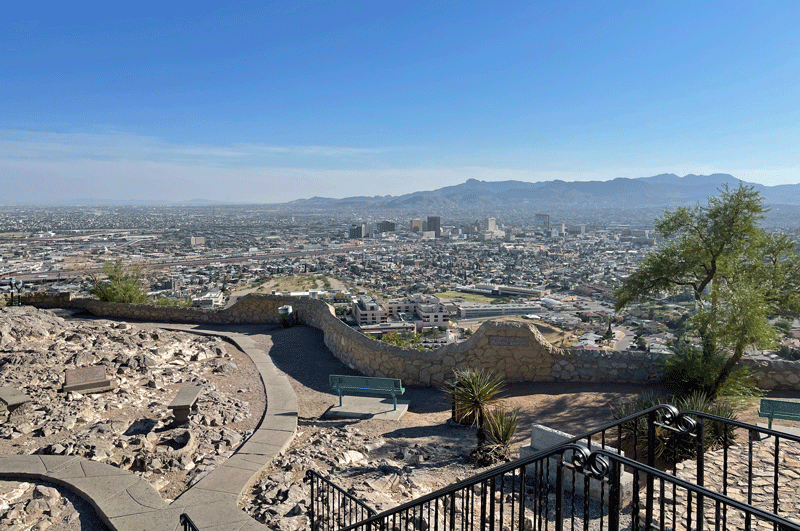
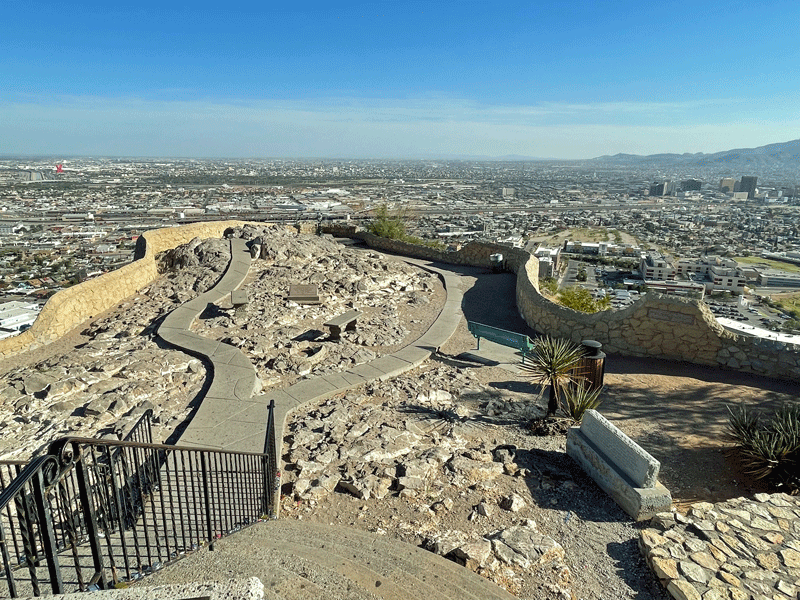
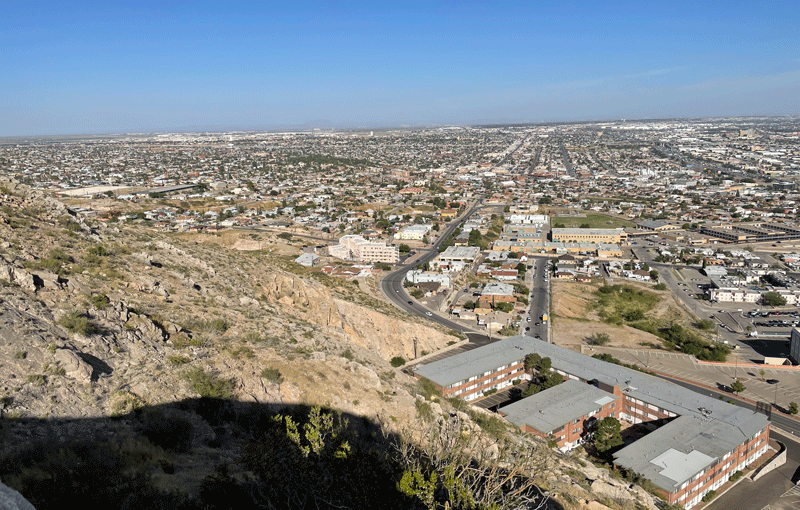
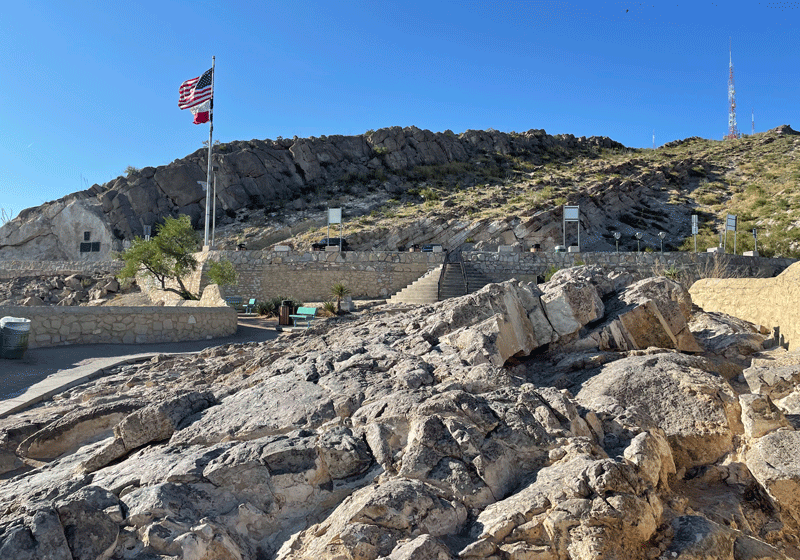
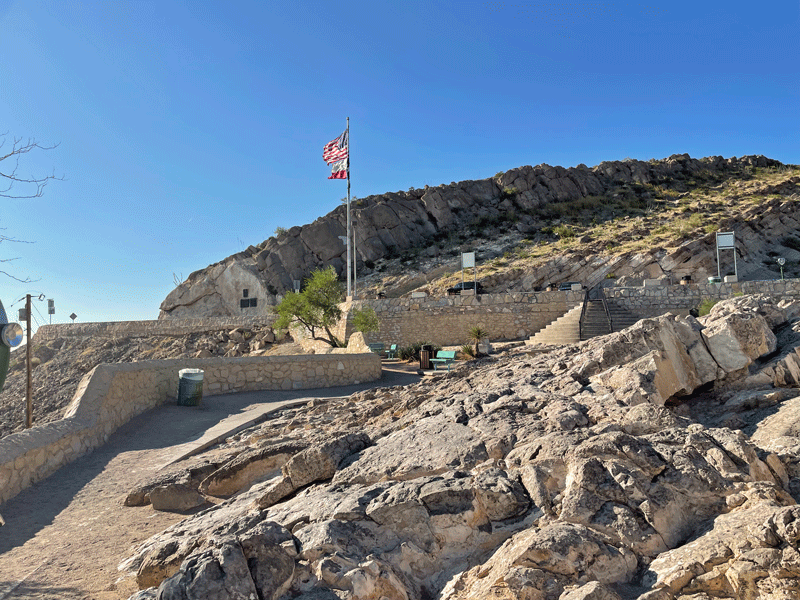
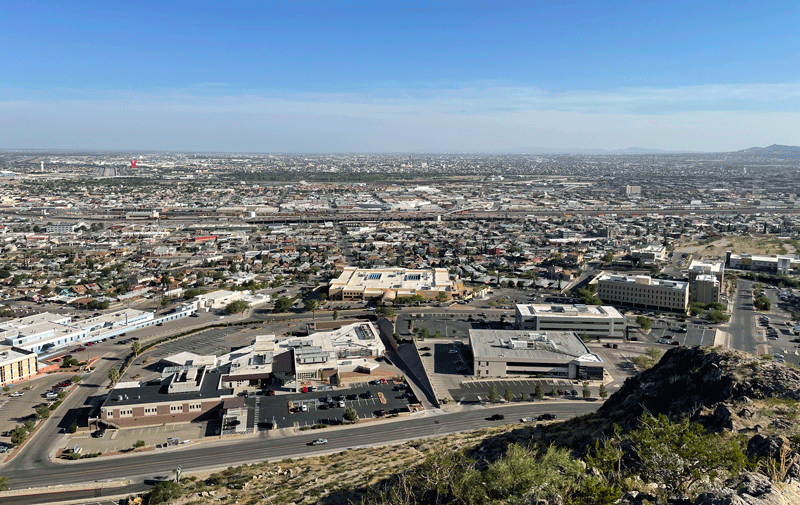
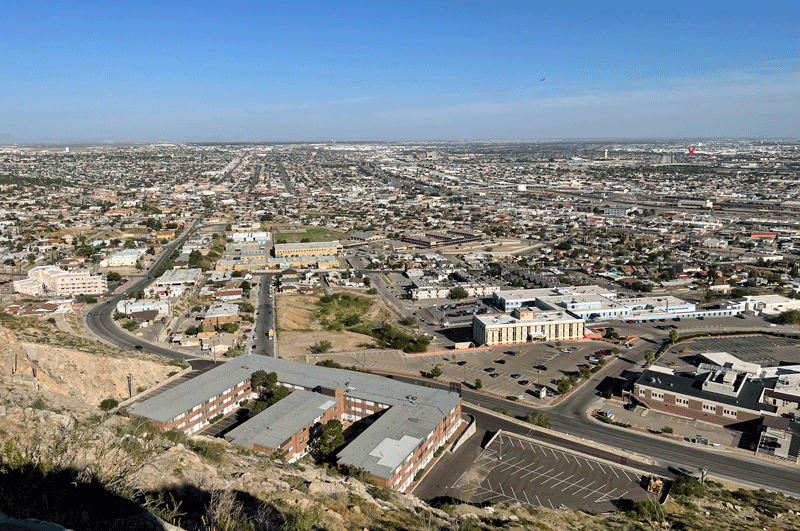
Khu Vực Downtown
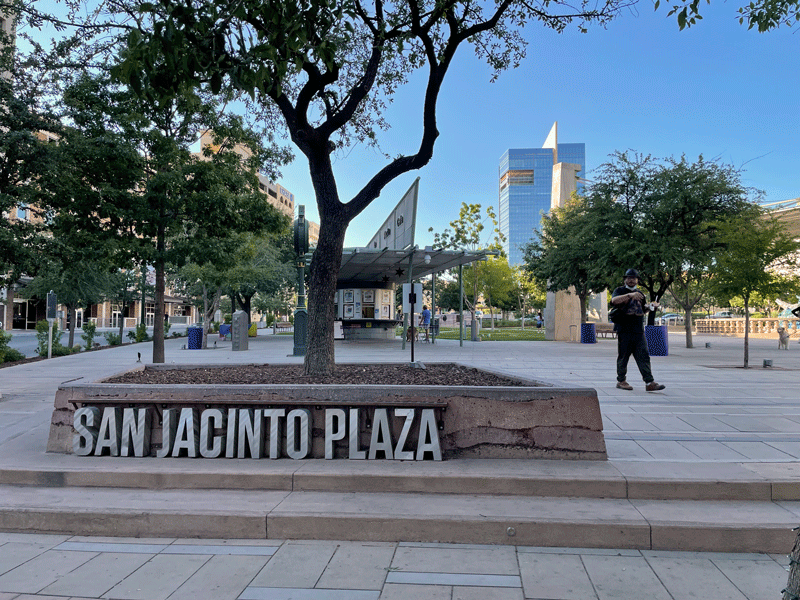
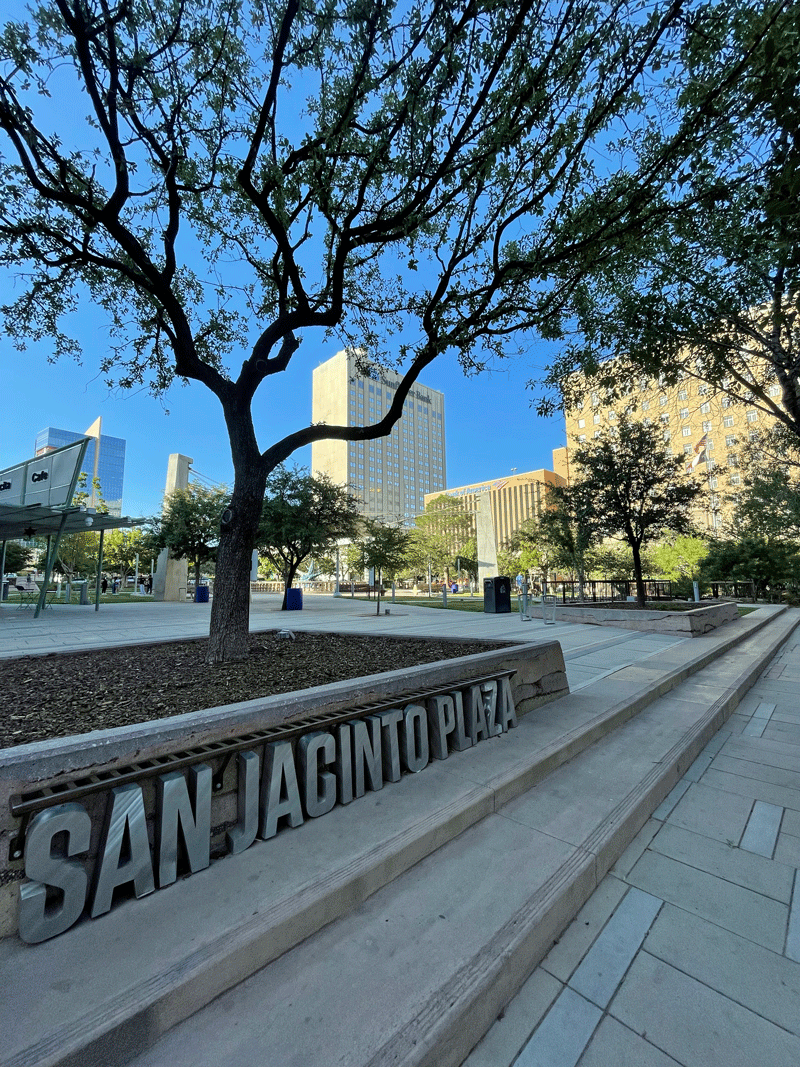
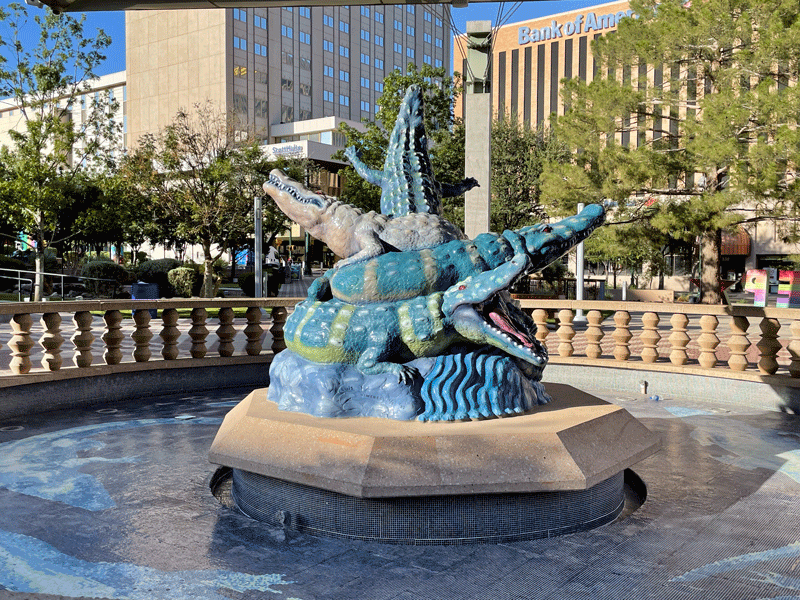
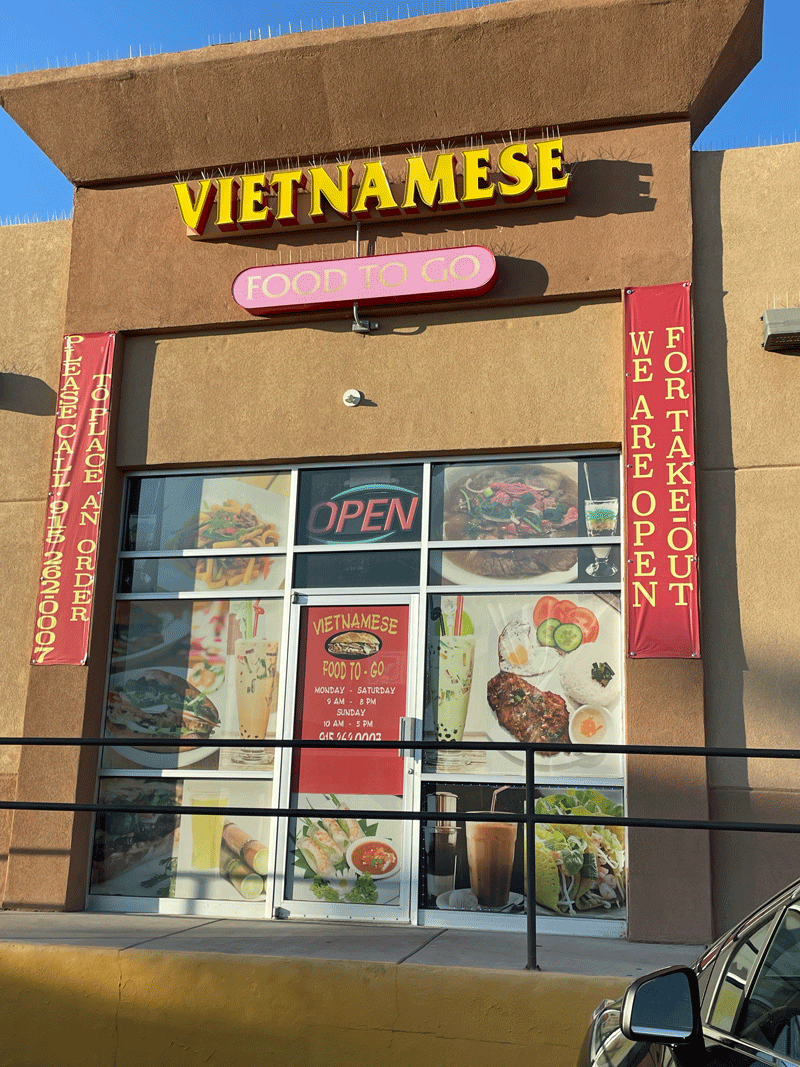
Tìm được nhà hàng Việt nam nhưng tiếc quá họ chỉ nhận take out đồ ăn mang về thôi.
El Paso Mission Trail
Trên đoạn đường khoảng 9 miles, có ba missions tạo thành El Paso Mission Trail. Mission là nhà nguyện do các linh mục Tây Ban Nha ngày xưa xây dựng lên để truyền đạo cho các người dân tộc đã sống trên vùng đất này rồi. Tại California cũng có tới hơn 20 missions như vậy.
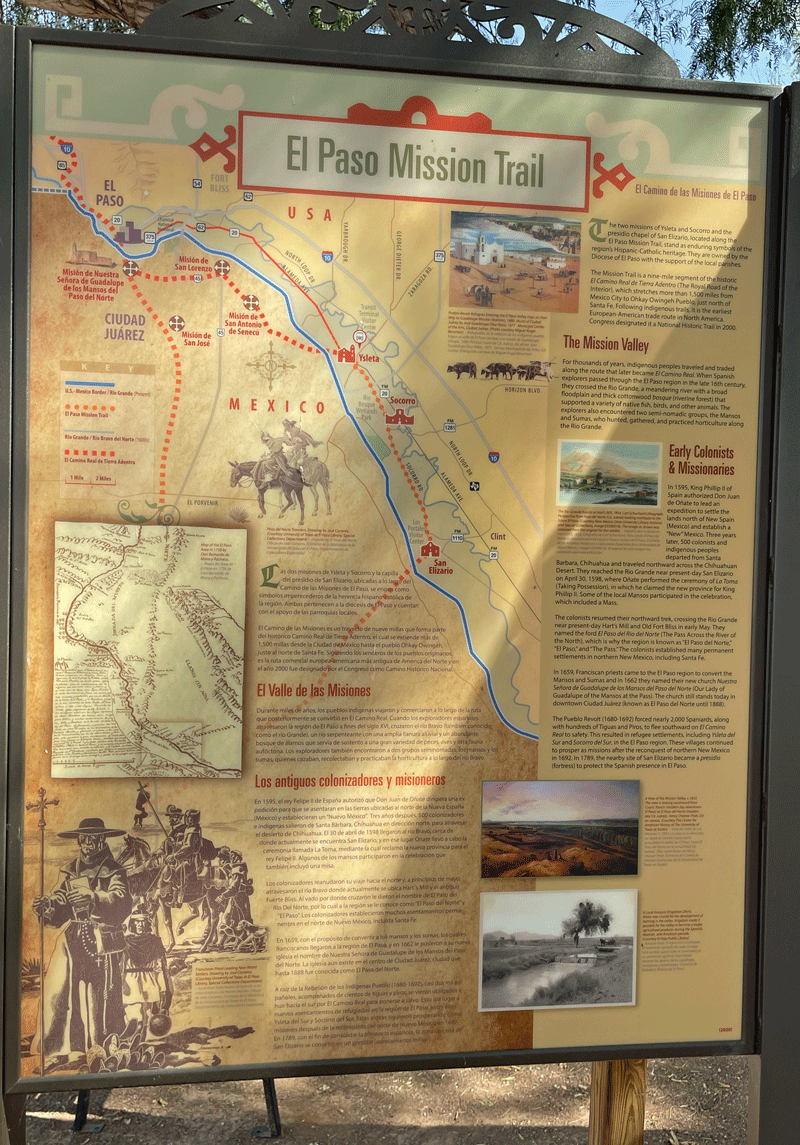
San Elizario Chapel
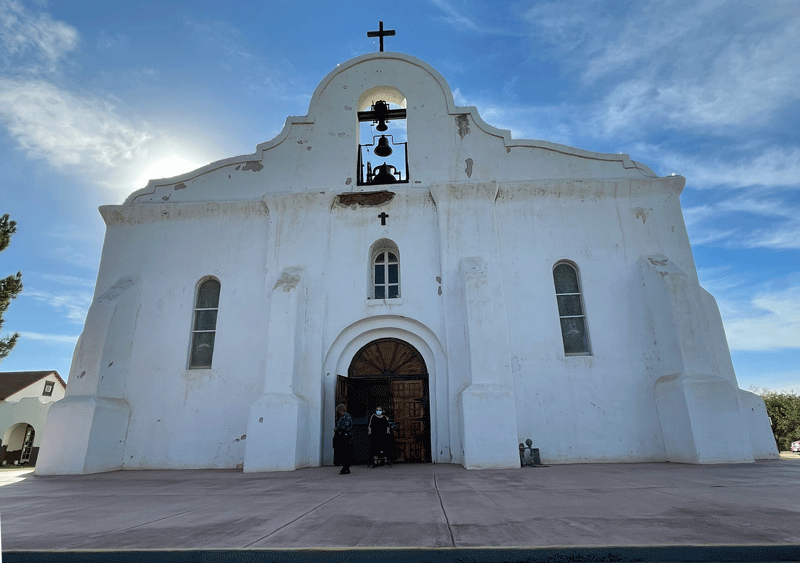
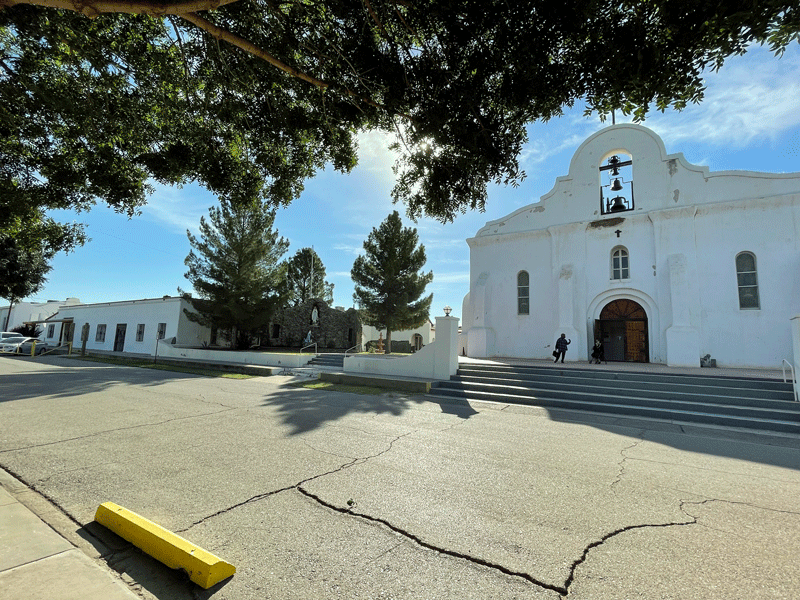
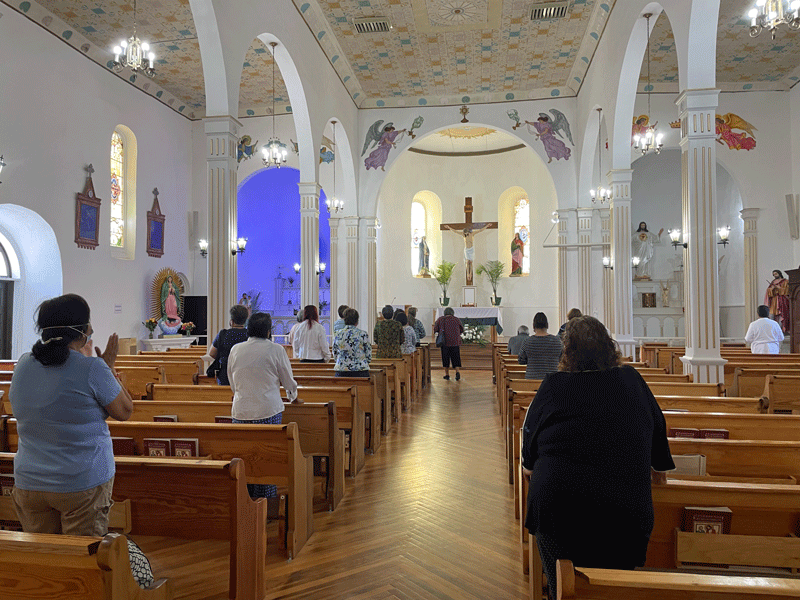
Buổi sáng ngày thường tại nhà nguyện San Elizario cũng có thánh lễ bằng tiếng Spanish. Giáo dân phần đông là người Mễ.
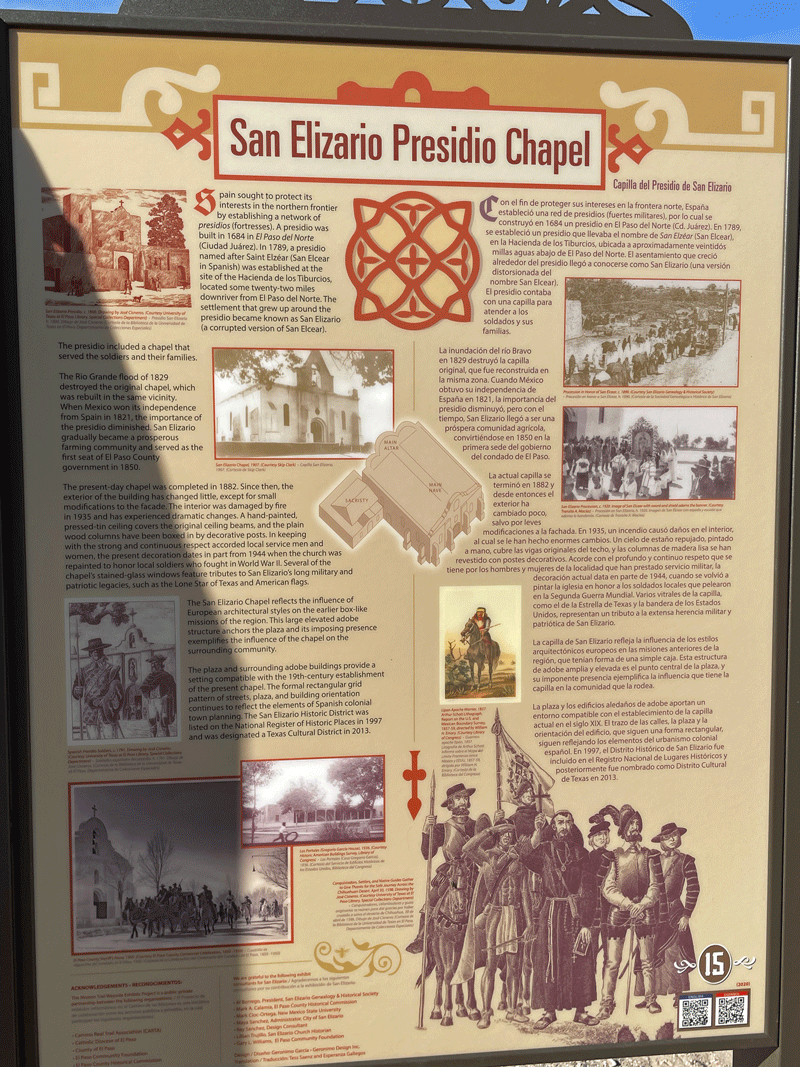
Nhà nguyện này còn có tên là San Elizario Presidio Chapel vì hồi xưa khu vực này có quân lính trú đóng.
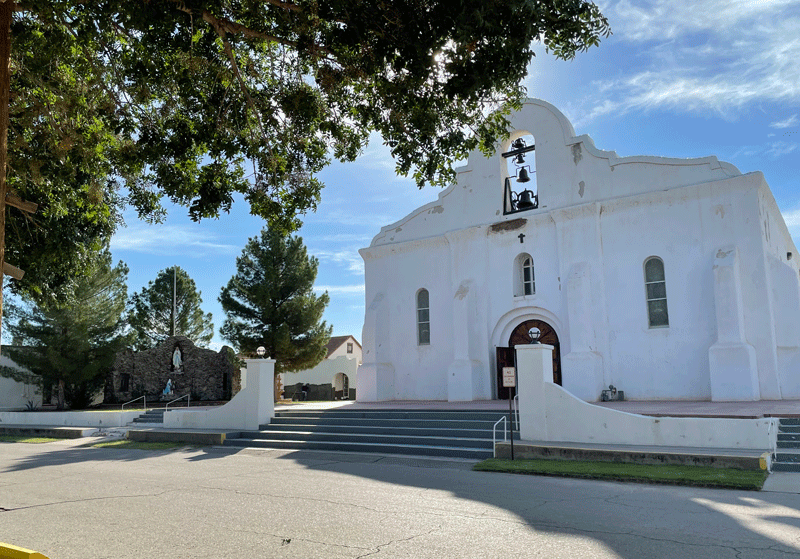
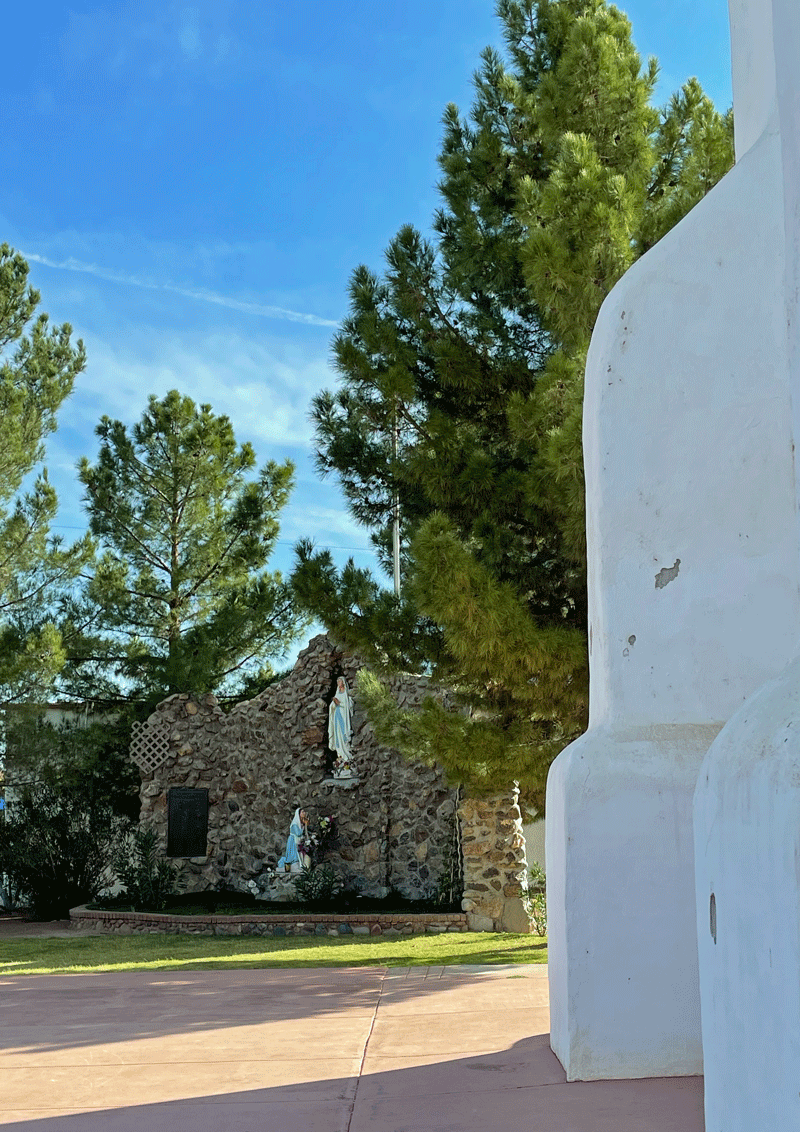
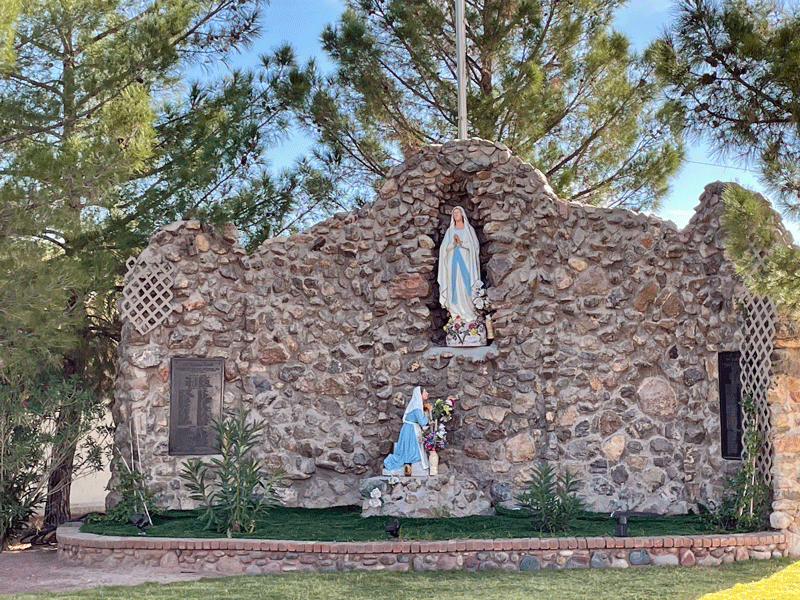
Đền Đức Mẹ bên cạnh nhà nguyện.
̉ 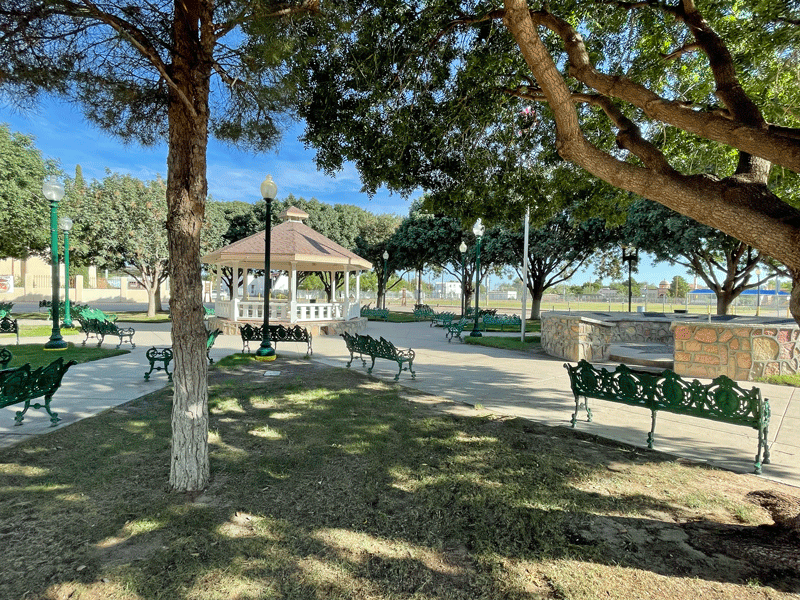
Khu công viên trước nhà nguyện.
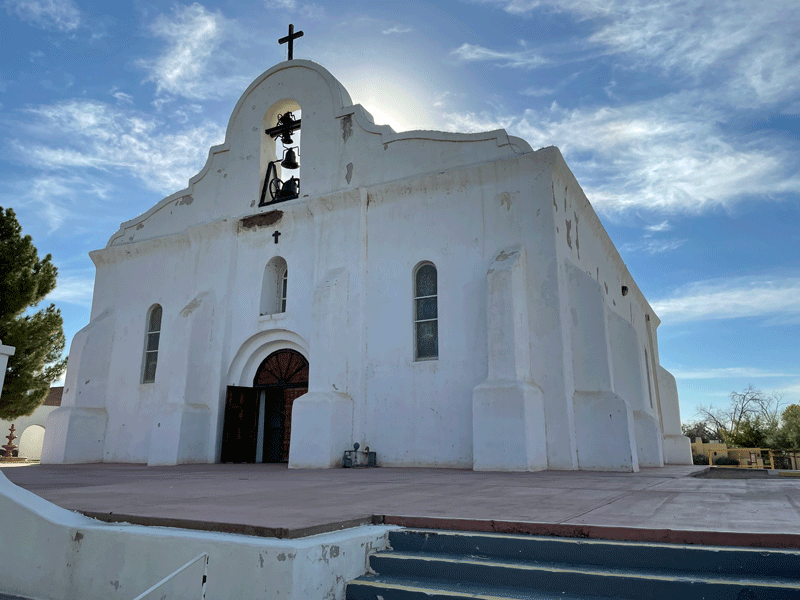
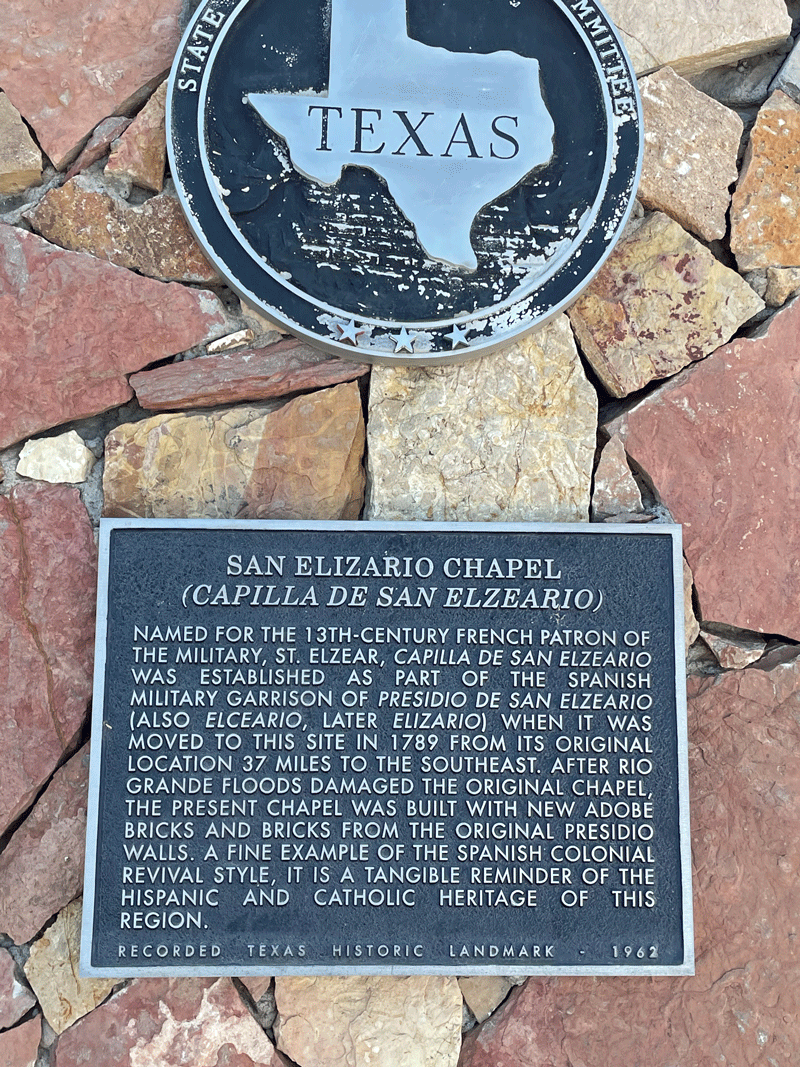
Socorro Mission
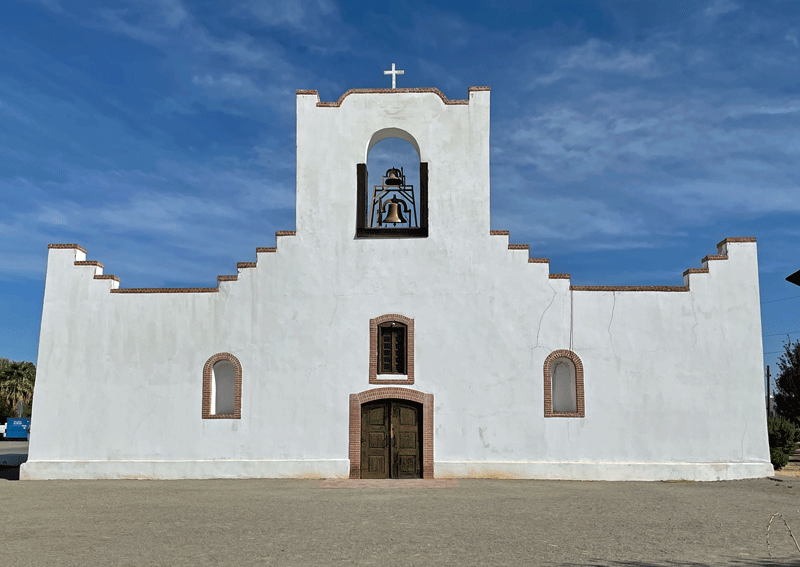
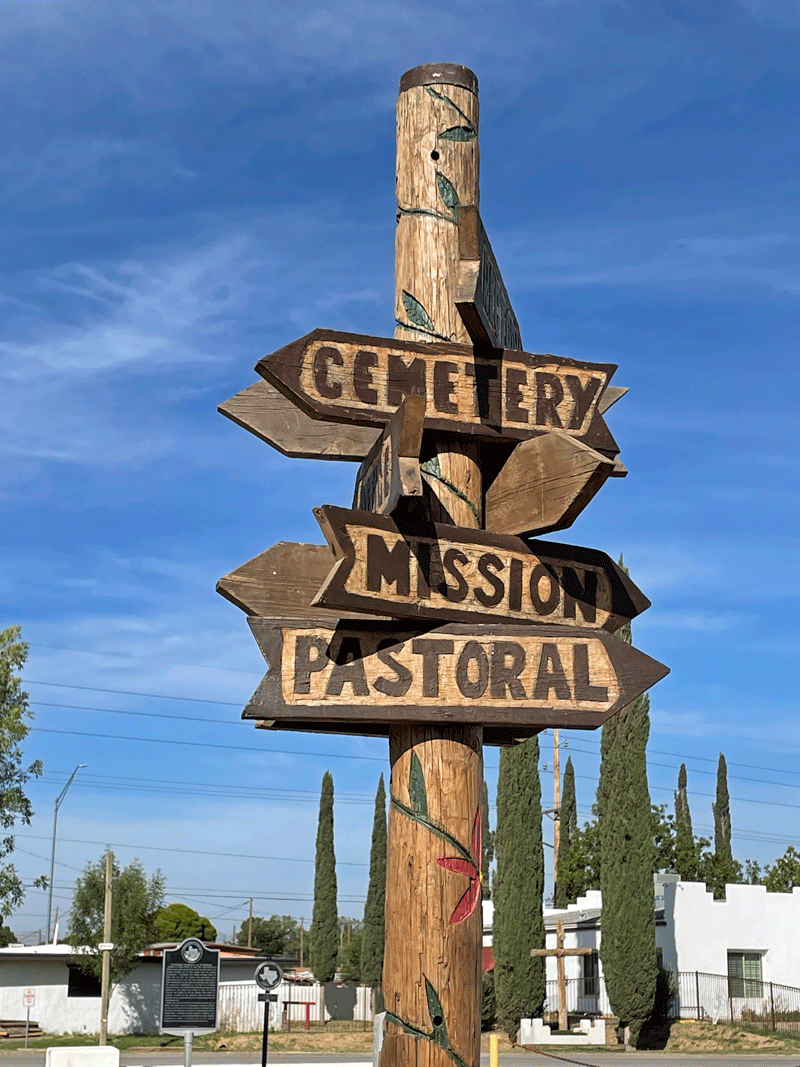
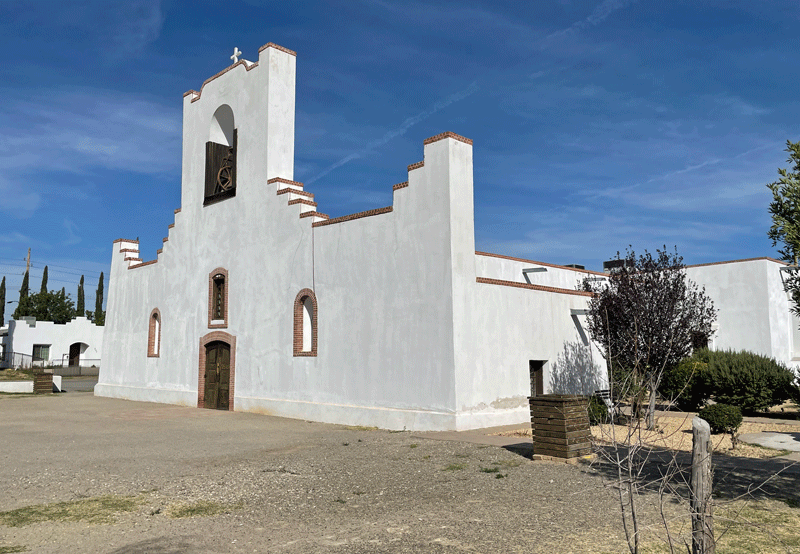
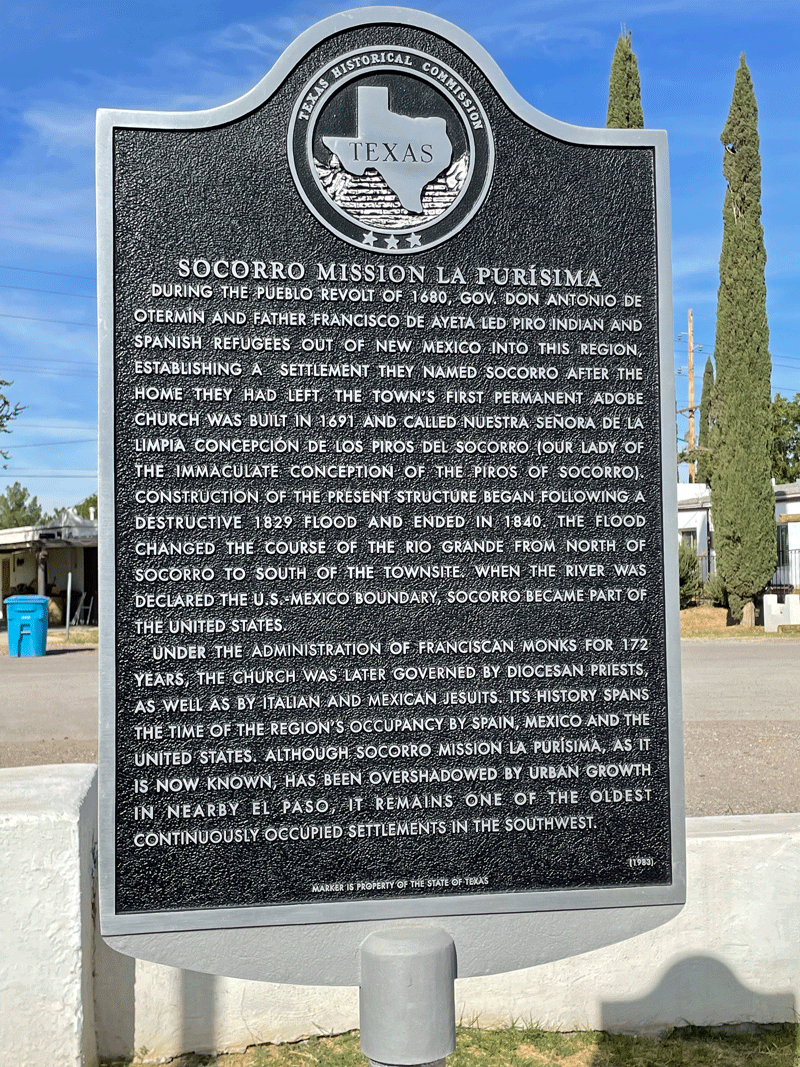
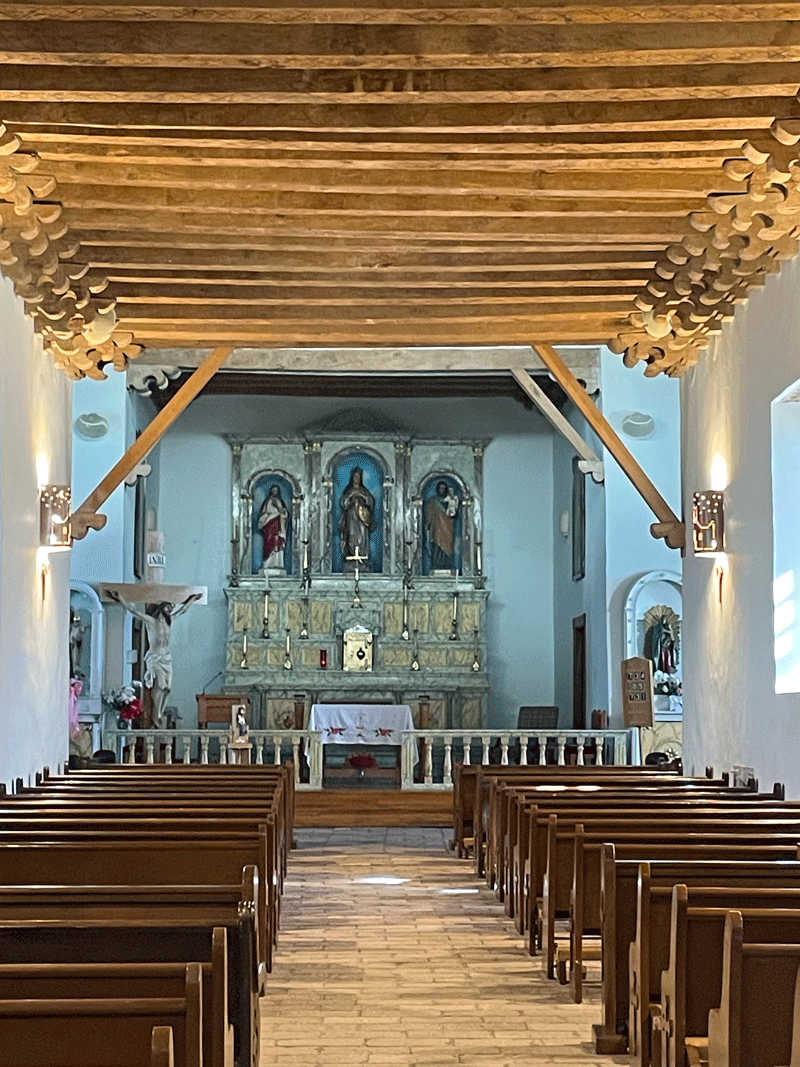
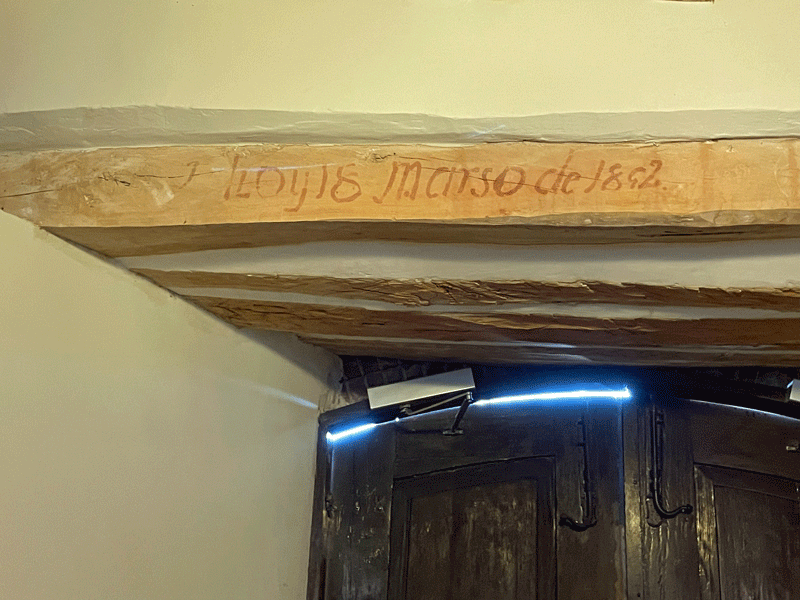
Hàng chữ trên cây đà ngang: "Hôm nay ngày 18 tháng 3 của năm 1892"
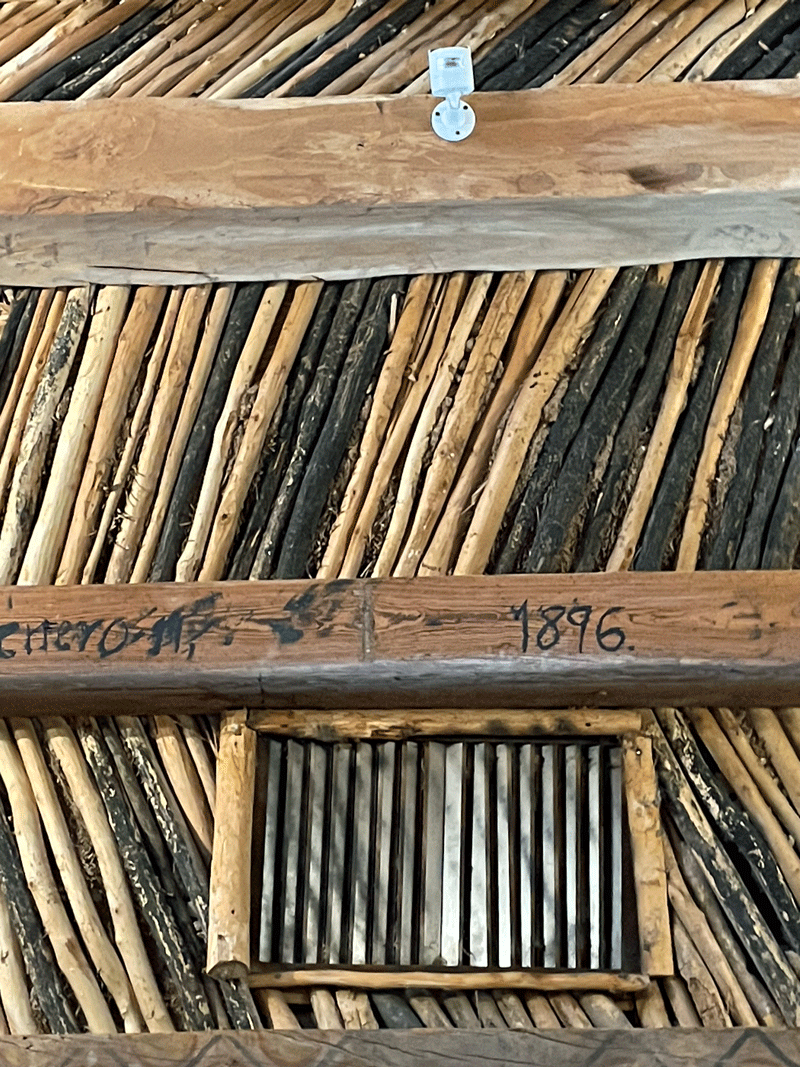
Ysleta Mission
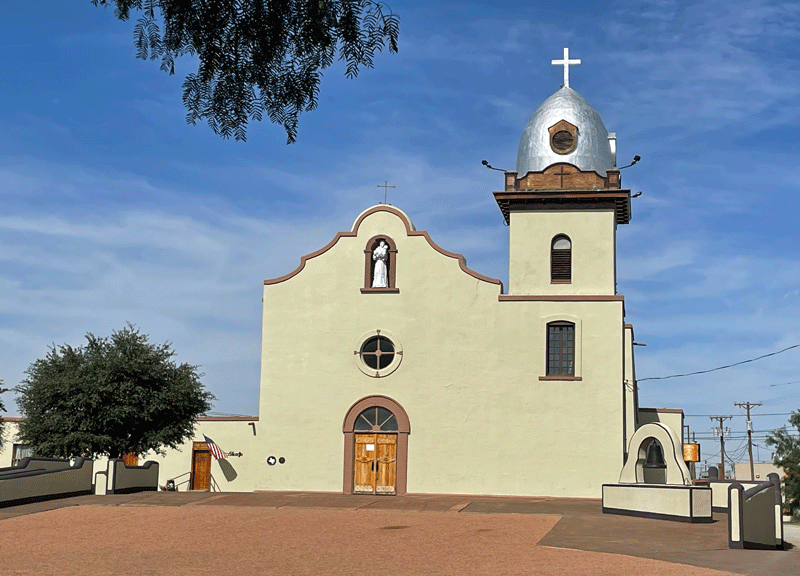
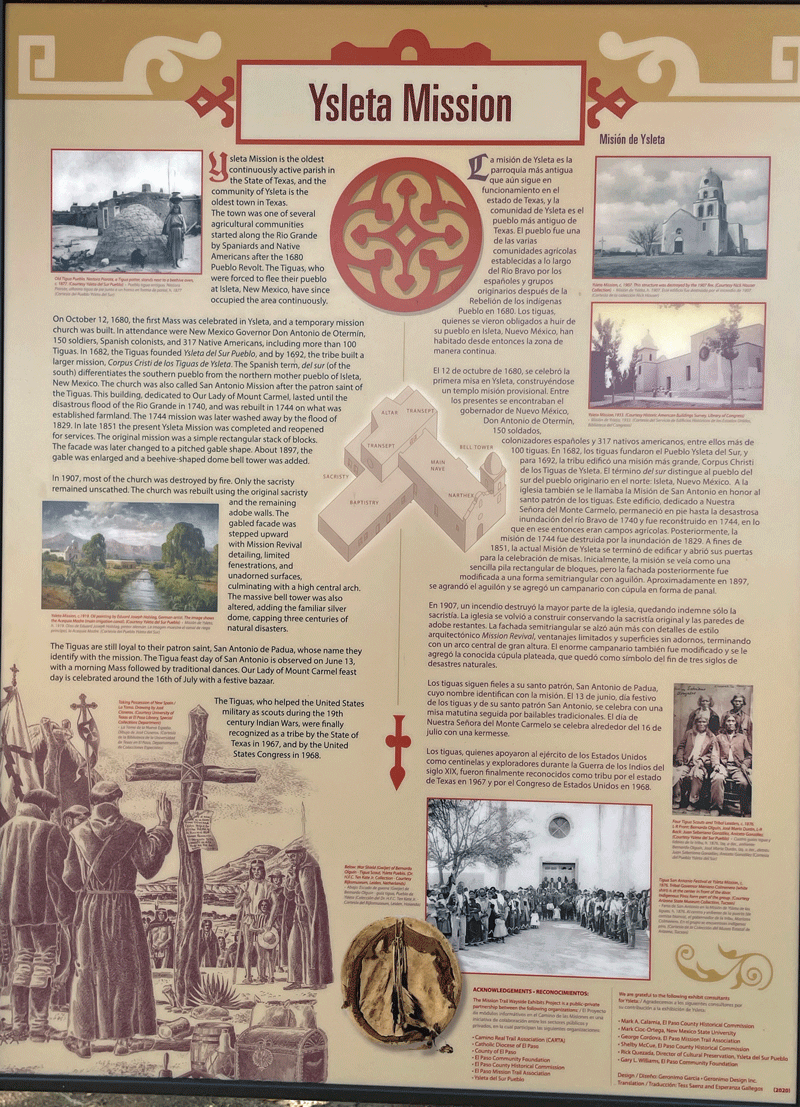
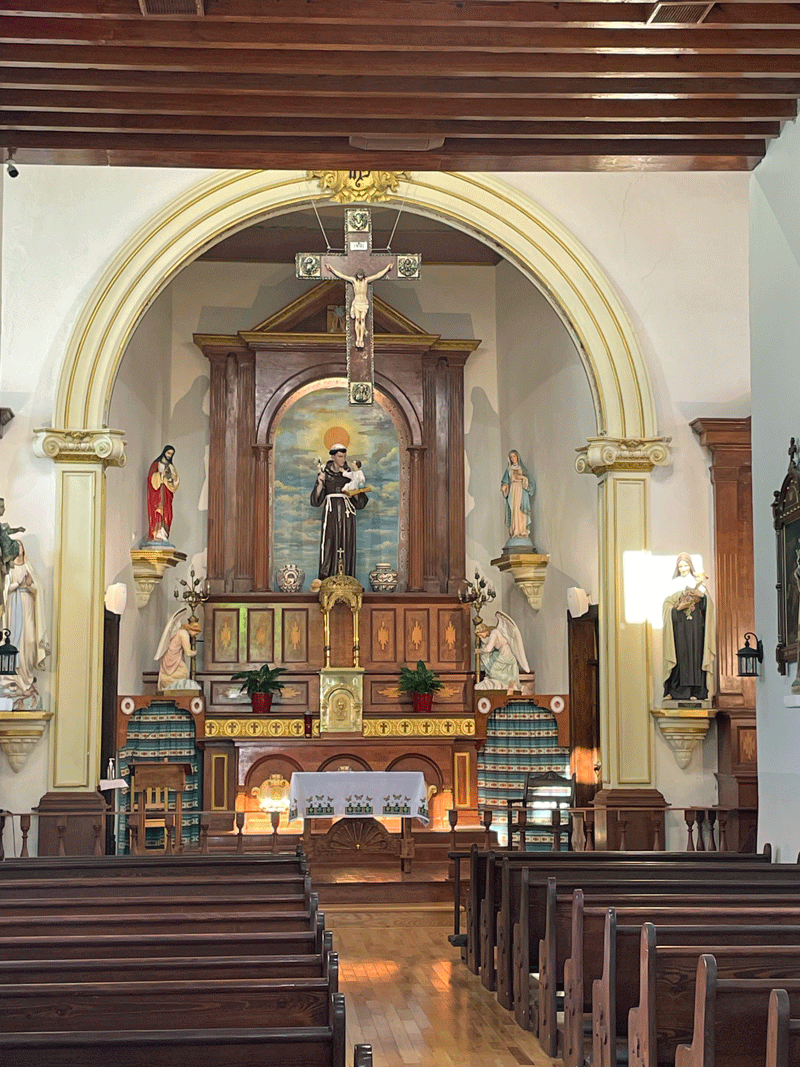 Phía bên trong nhà nguyện.
Phía bên trong nhà nguyện.
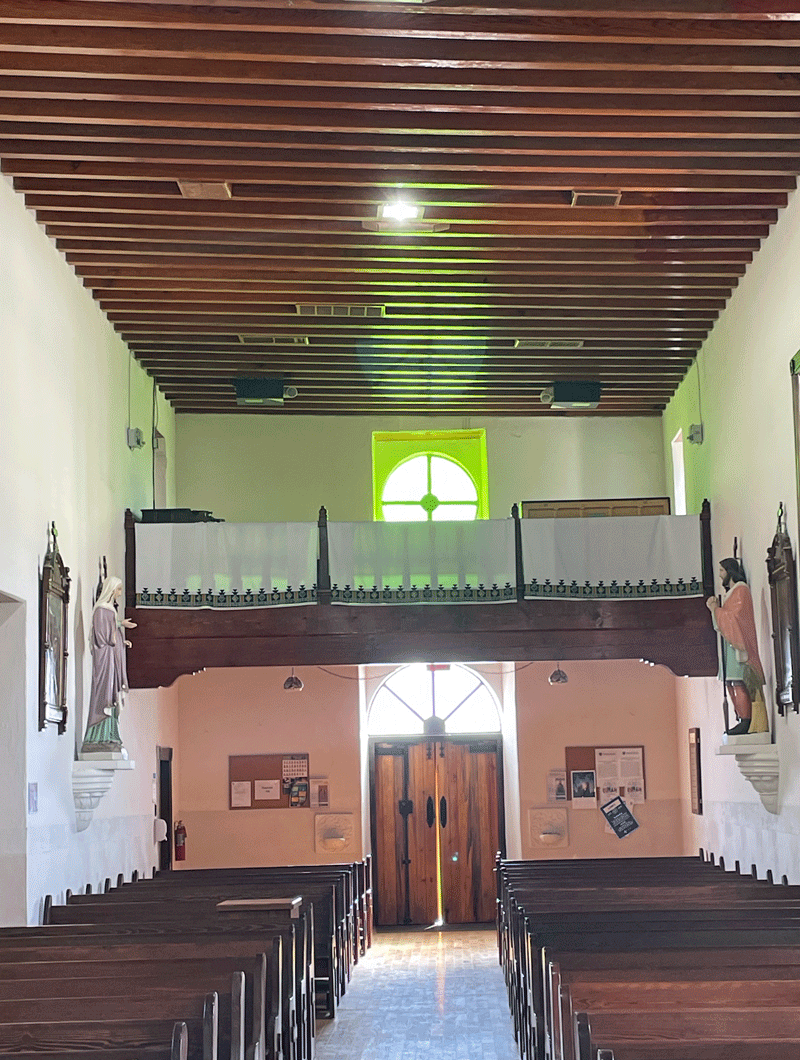
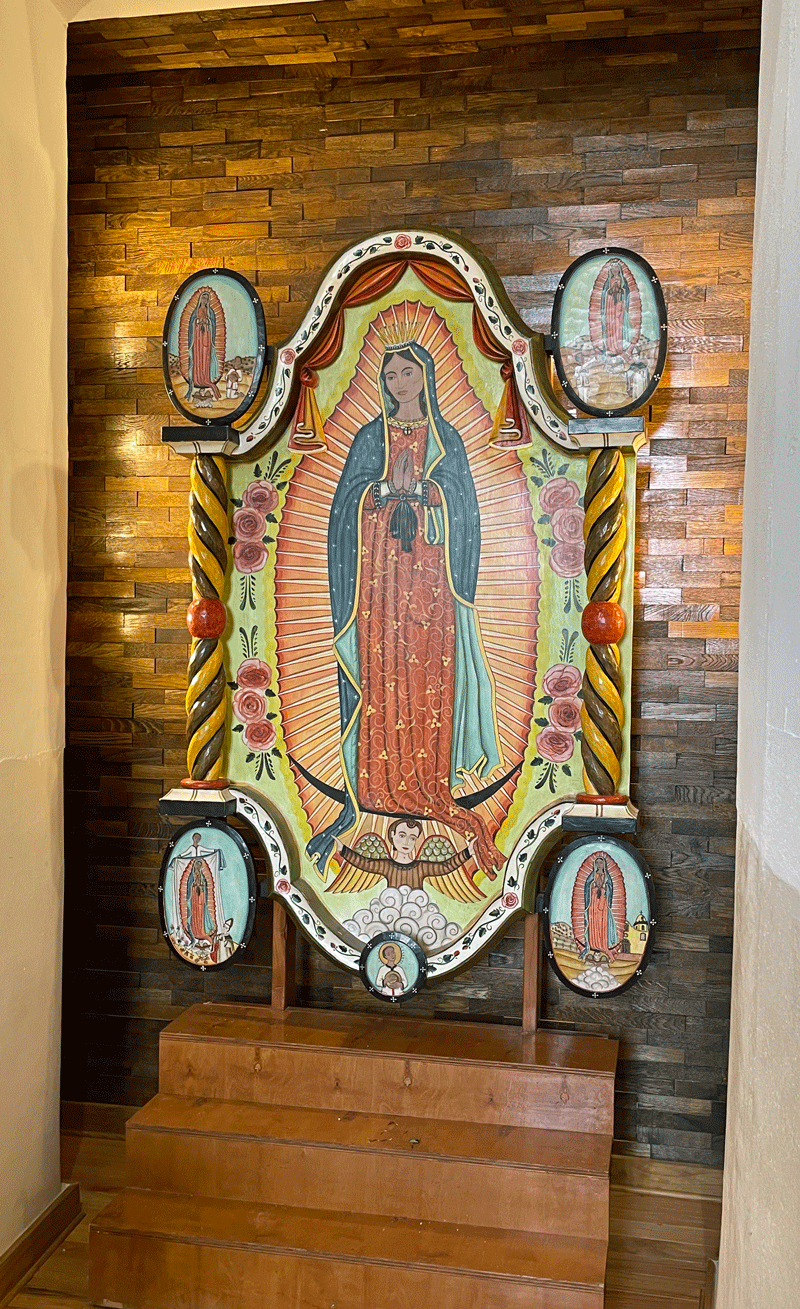
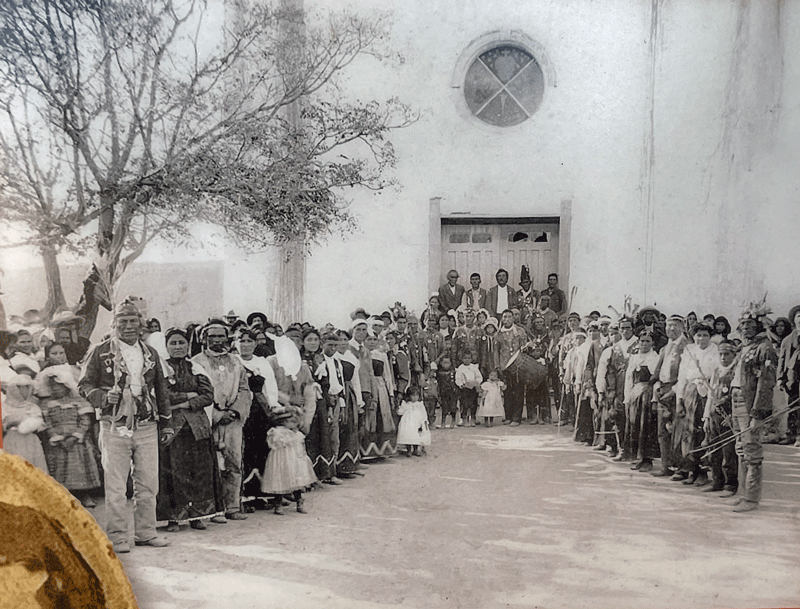
Hình những người dân tộc trước cửa nhà nguyện hồi xưa lâu lắm rồ̀i.
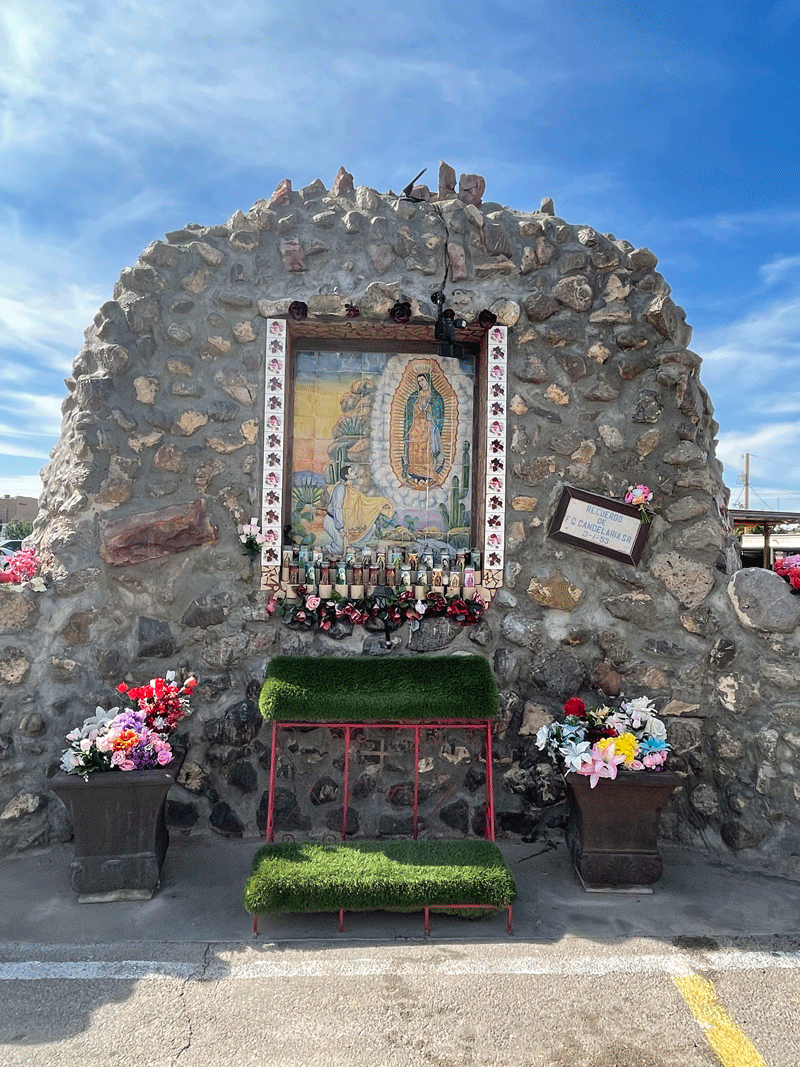
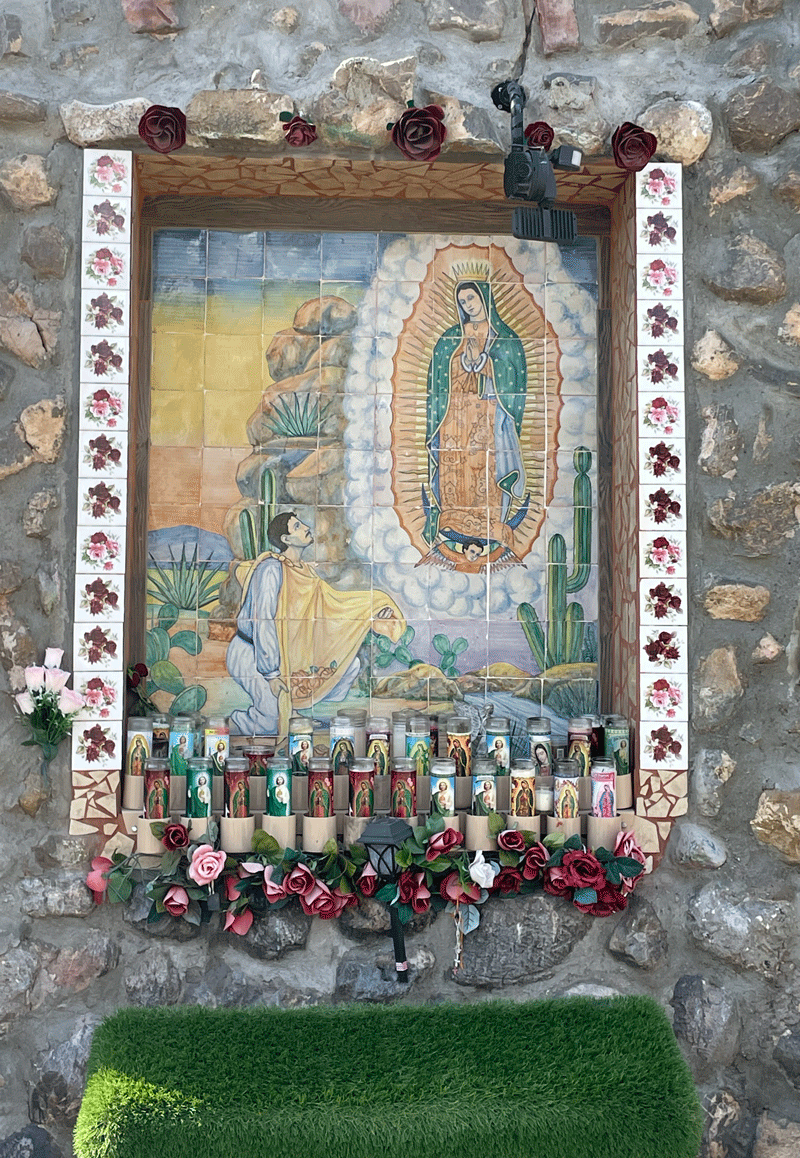
Phía bên ngoài ngay chỗ parking có chỗ cầu nguyến Đức Mẹ Guadalupe.
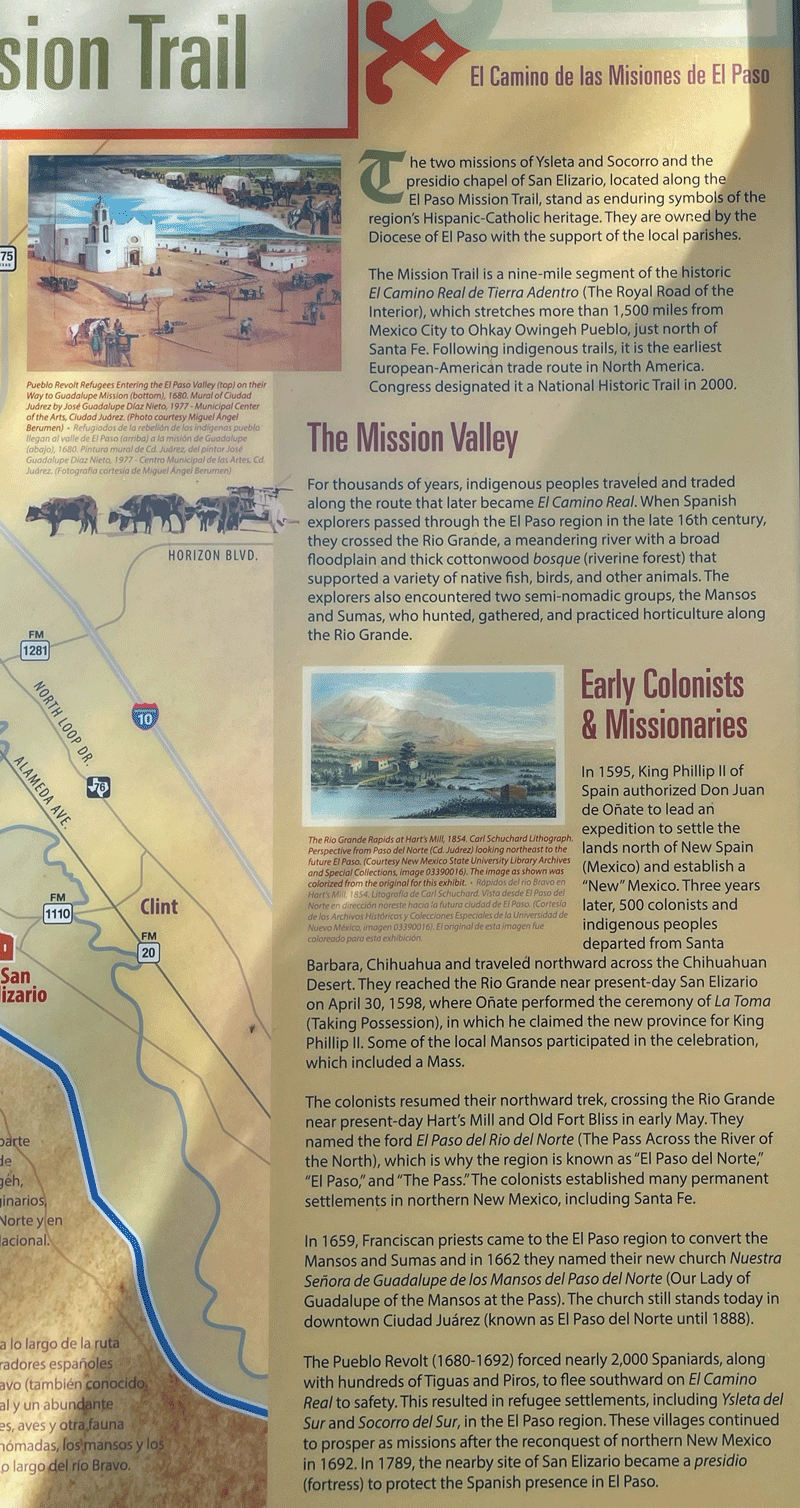
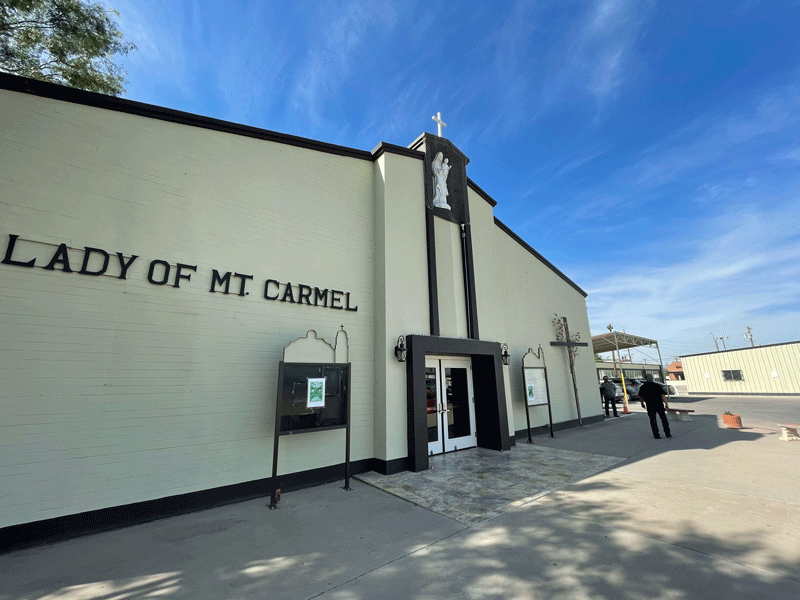
Ngay phía gần như đối diện với
Ysleta Mission là nhà thờ rất lớn : Lady Of Mt Carmel.
Chamizal National Memorial Park
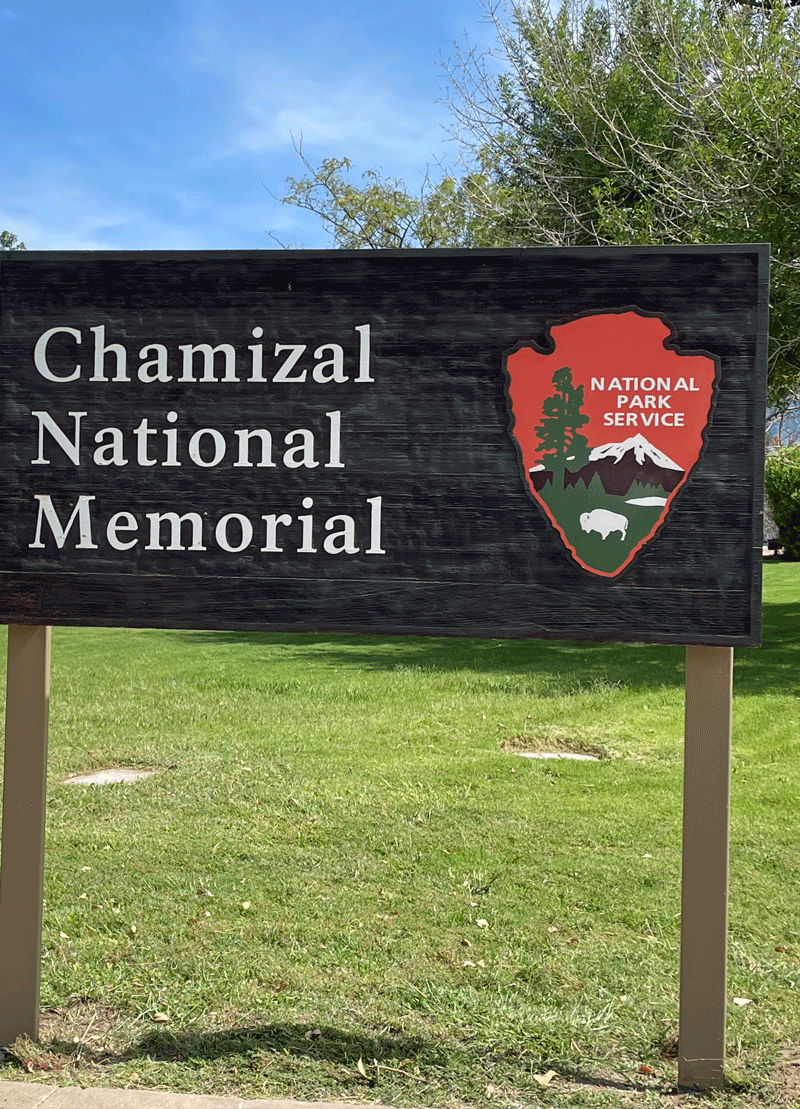
Chamizal National Memorial là một công viên khá lớn nằm sát freeway
chạy song song với biên giới Hoa Kỳ và Mễ Tây Cơ. Vùng đất Chamizal có sự tranh chấp về chủ quyền giữa hai nước cả trăm năm. Lúc đầu biên giới giữa hai nước được ngăn bỡi con sông lớn Rio Grande, vùng Chamizal này nằm ở phía nam con sông Rio Grande nên thuộc Mễ Tây Cơ. Qua quá trình cả trăm năm và qua các trận lụt lớn, con sông Rio Grande dần dần di chuyển về hướng nam và vùng Chamizal này trở thành của Mỹ vì nó nằm ở phía bắc con sông.
Sau hơn trăm năm cuối cùng vào năm 1963 hai bên đạt được thoả hiệp cho đến bây giờ.
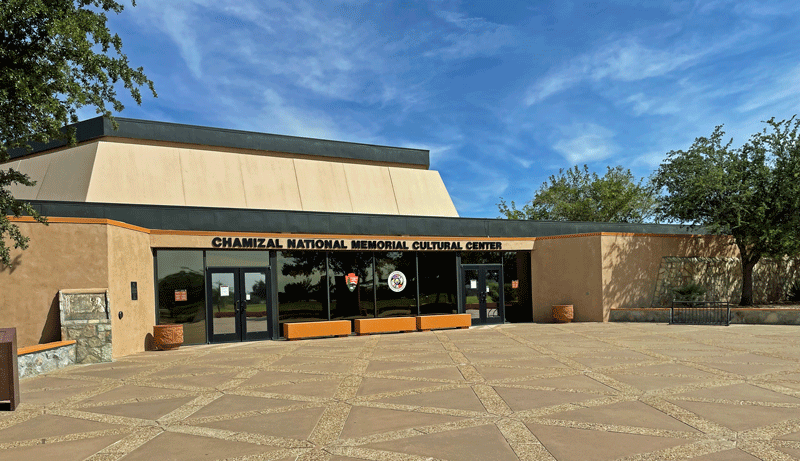
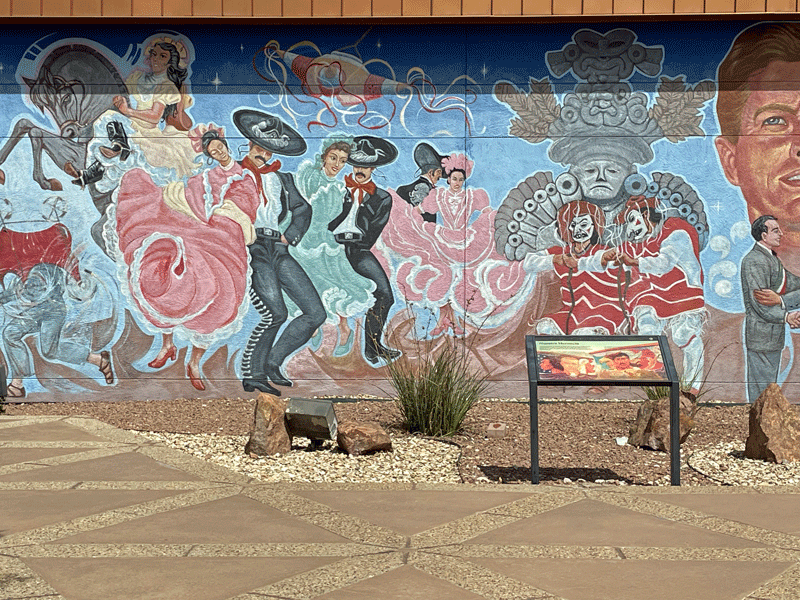
Các hình dưới chụp tại phòng triển lãm bên trong.
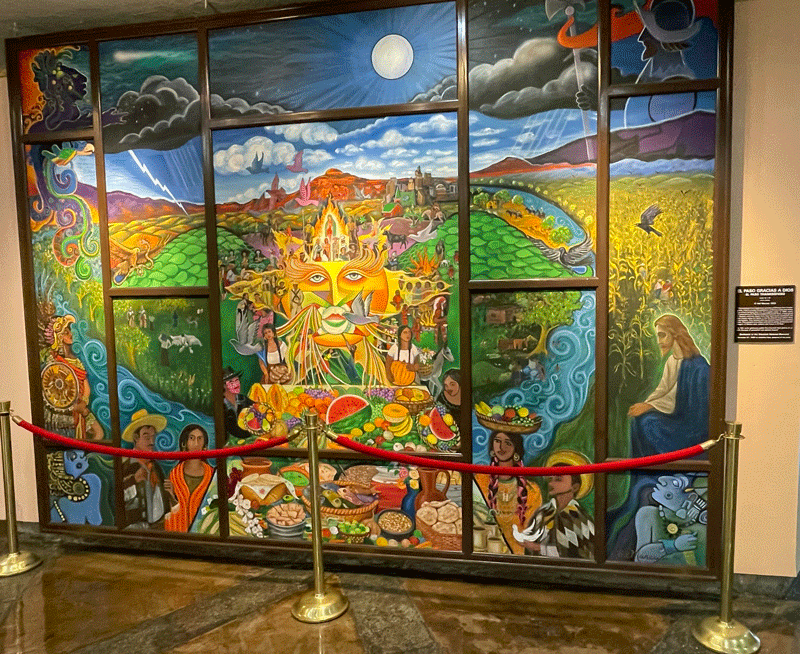
Ghi chú tấm hình này là tấm hình dưới.
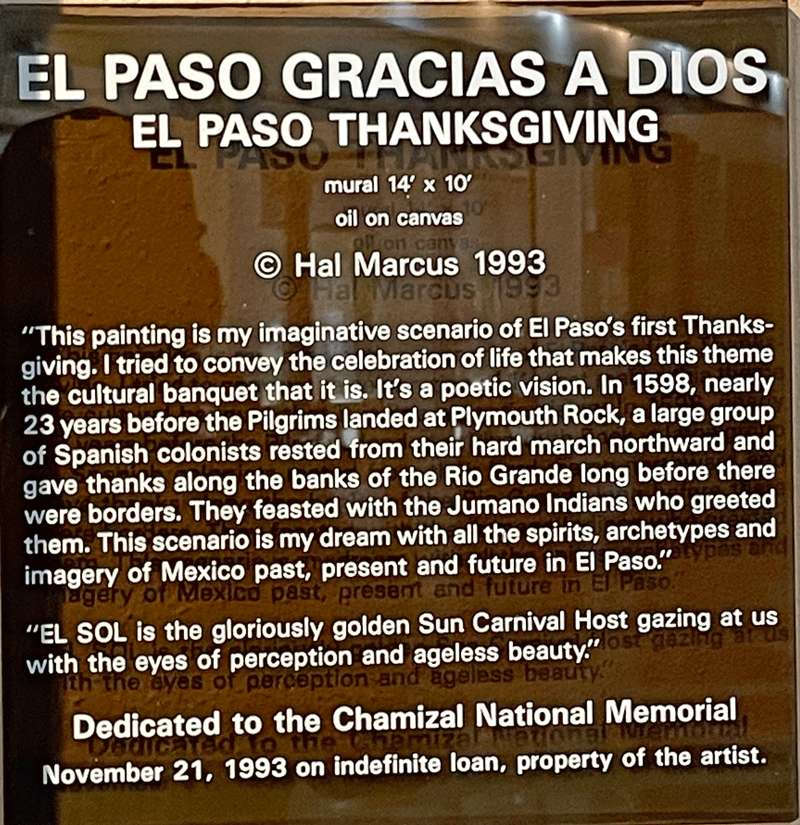
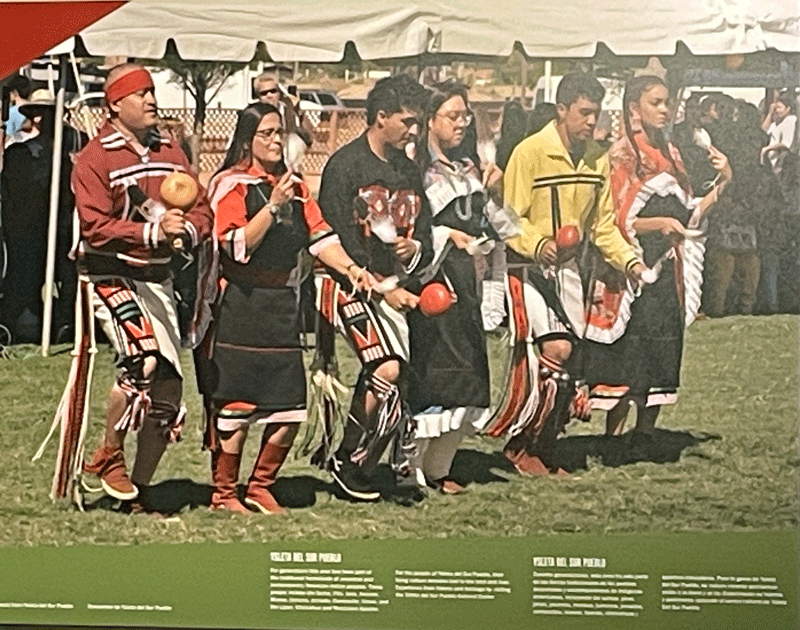
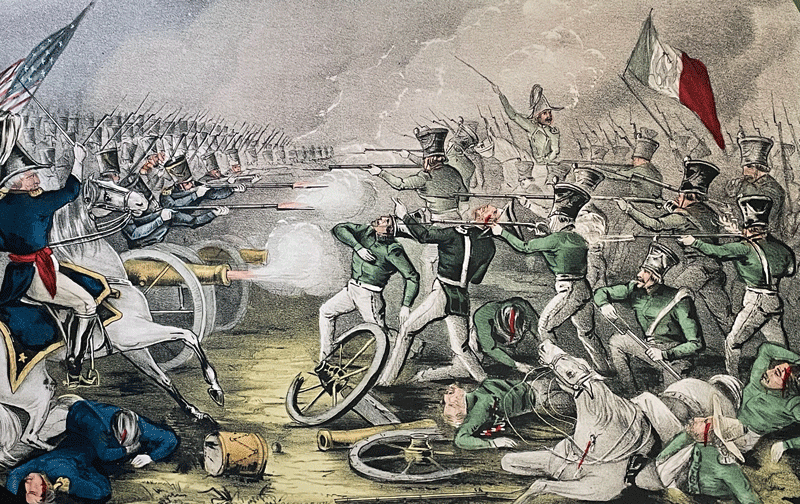
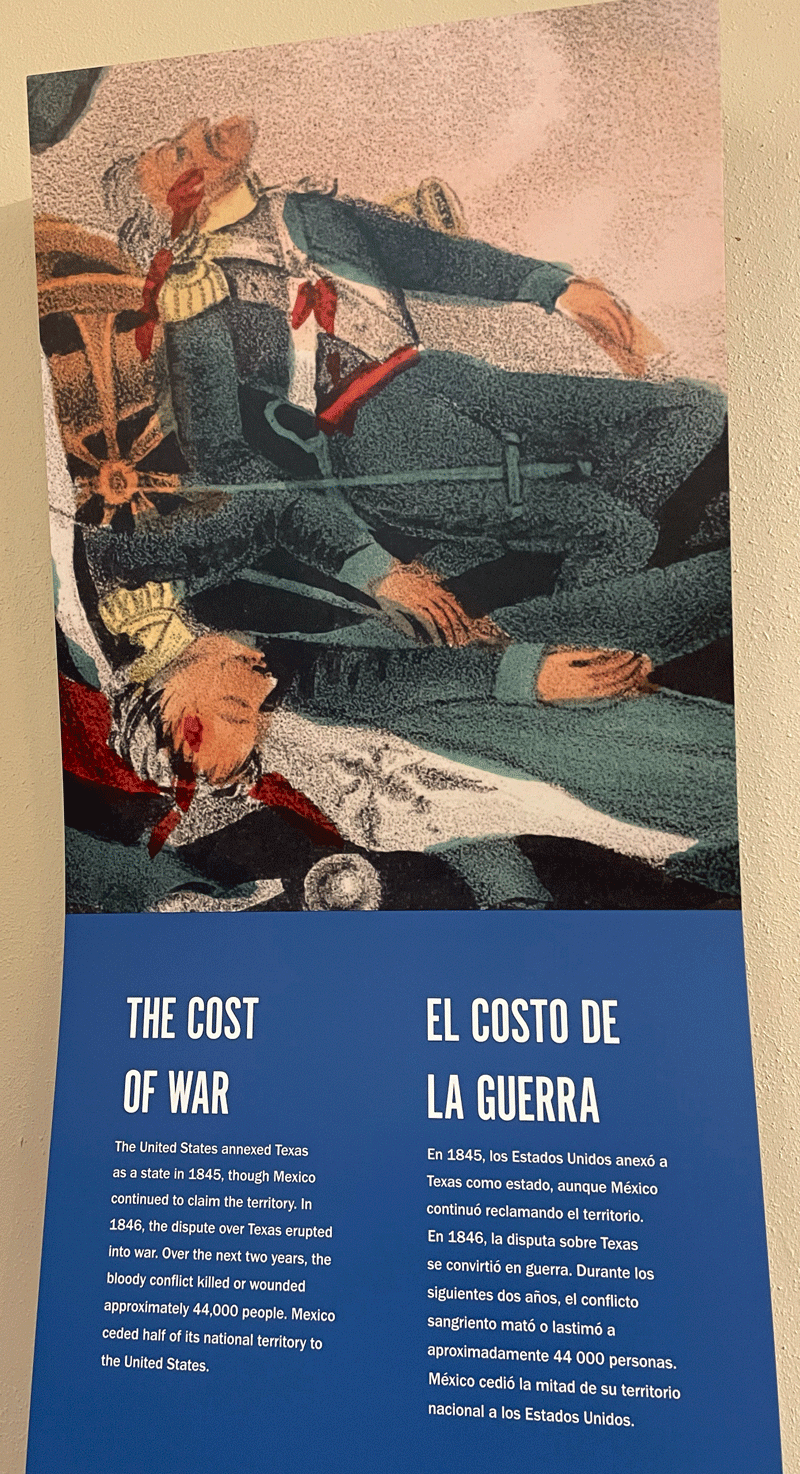
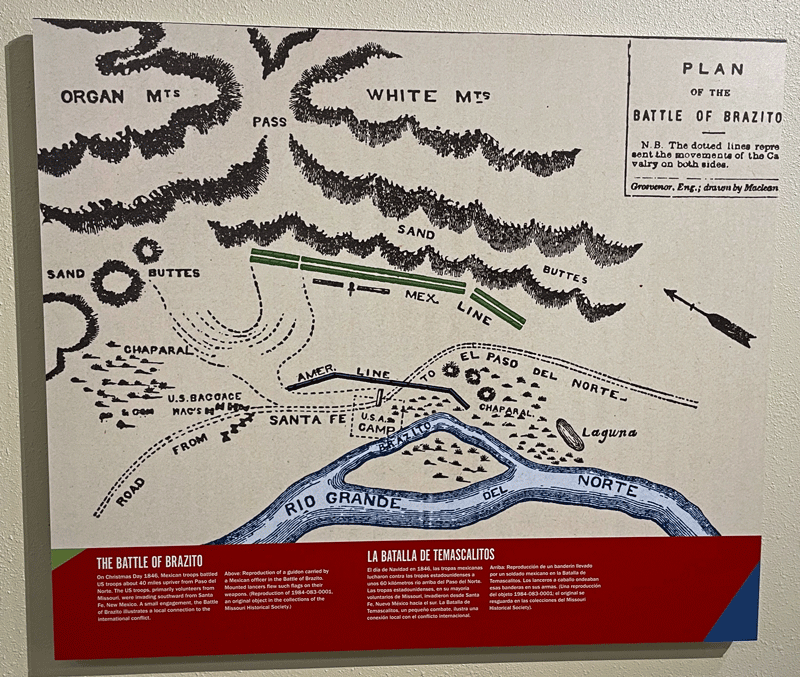
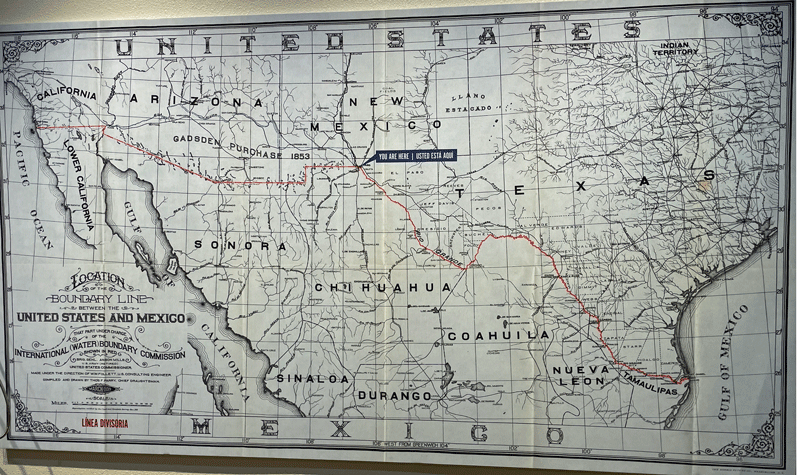
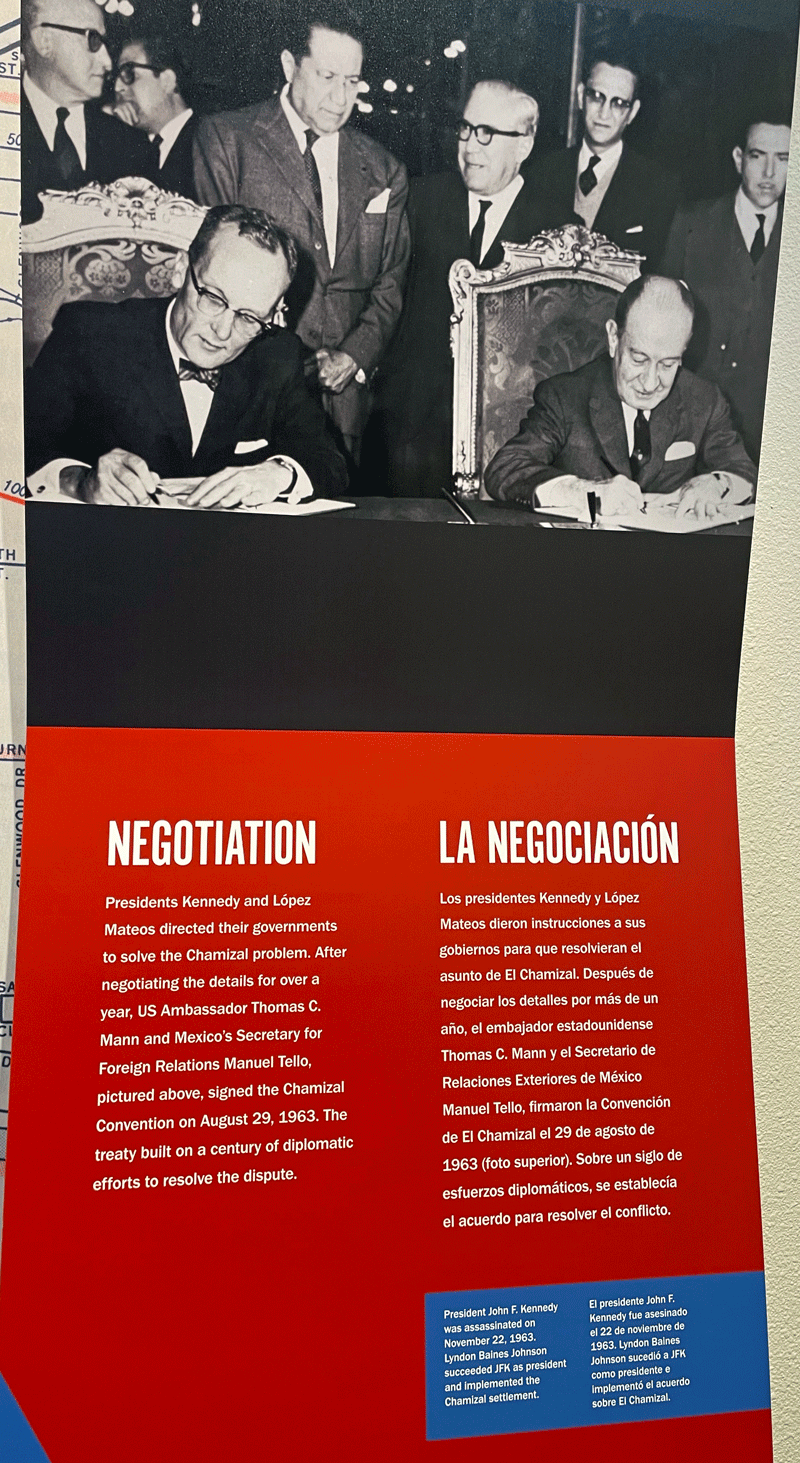
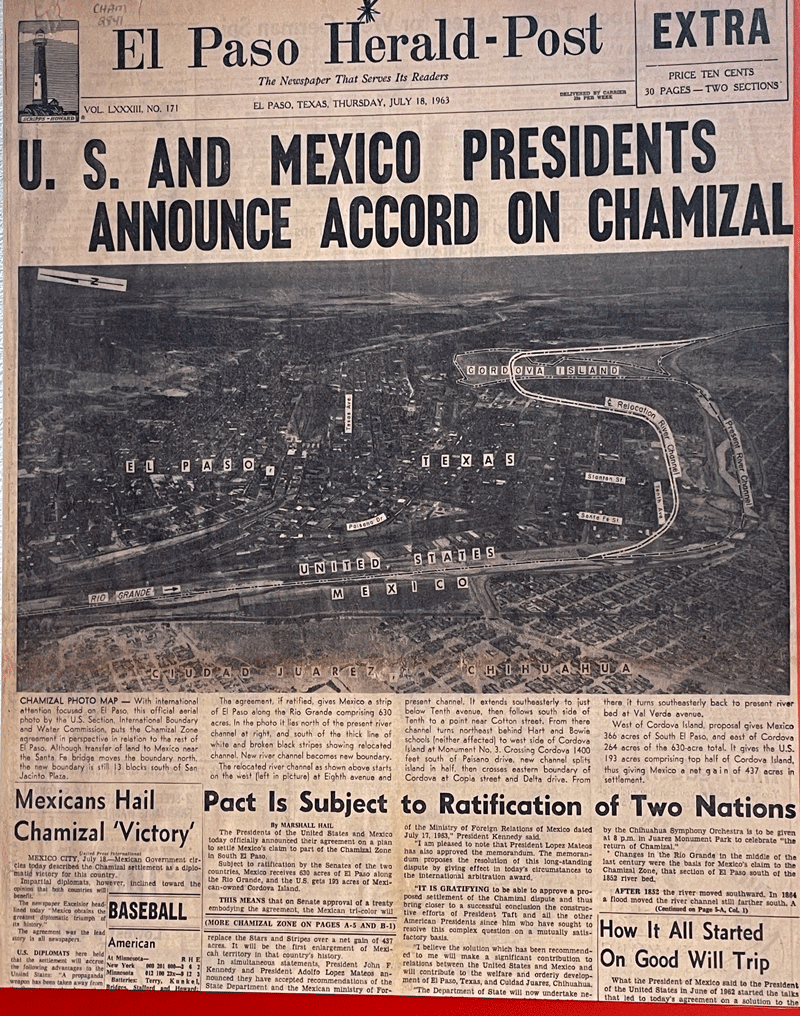
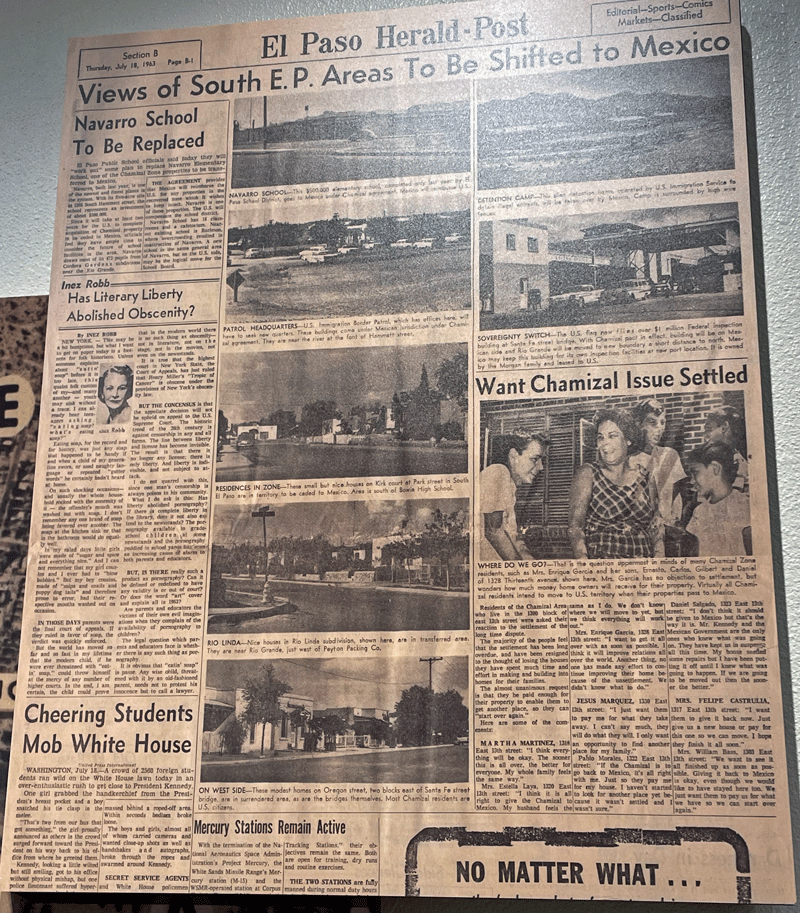
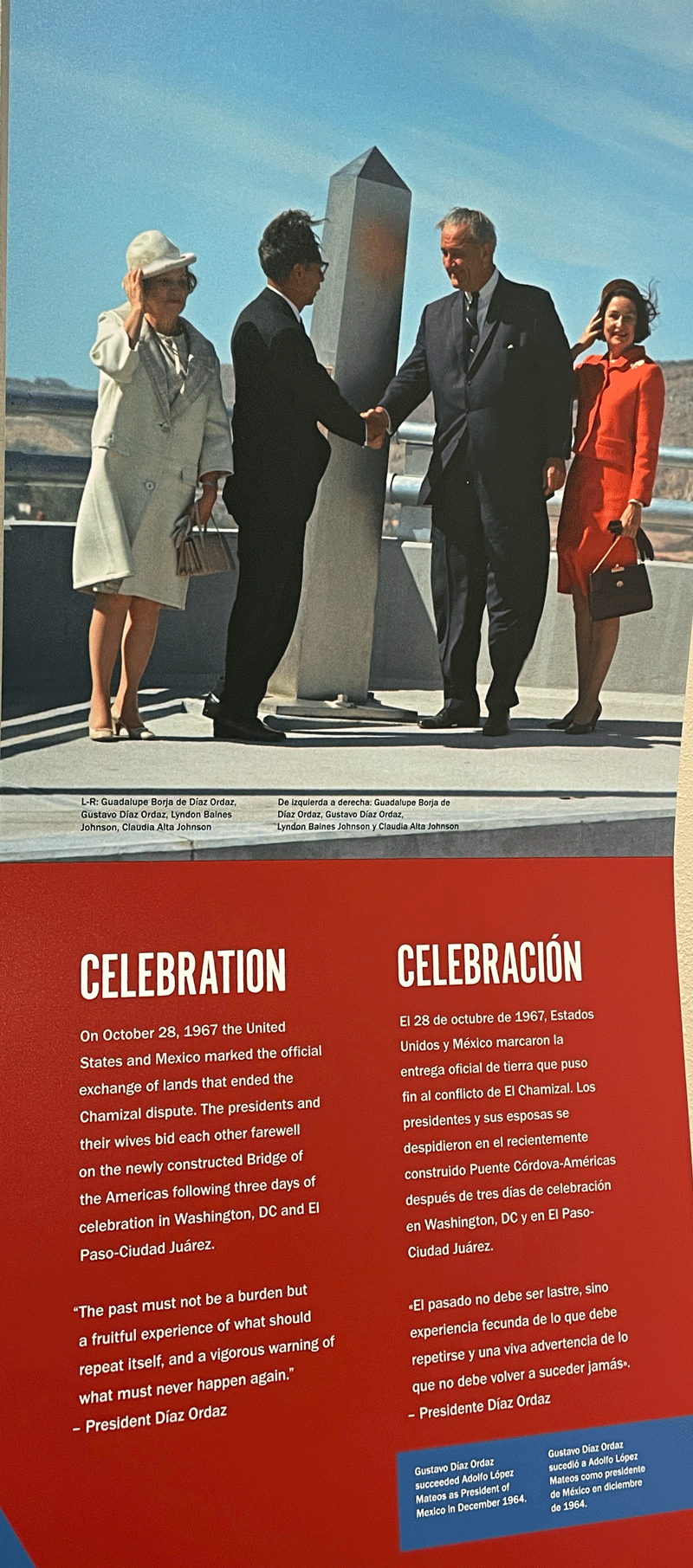
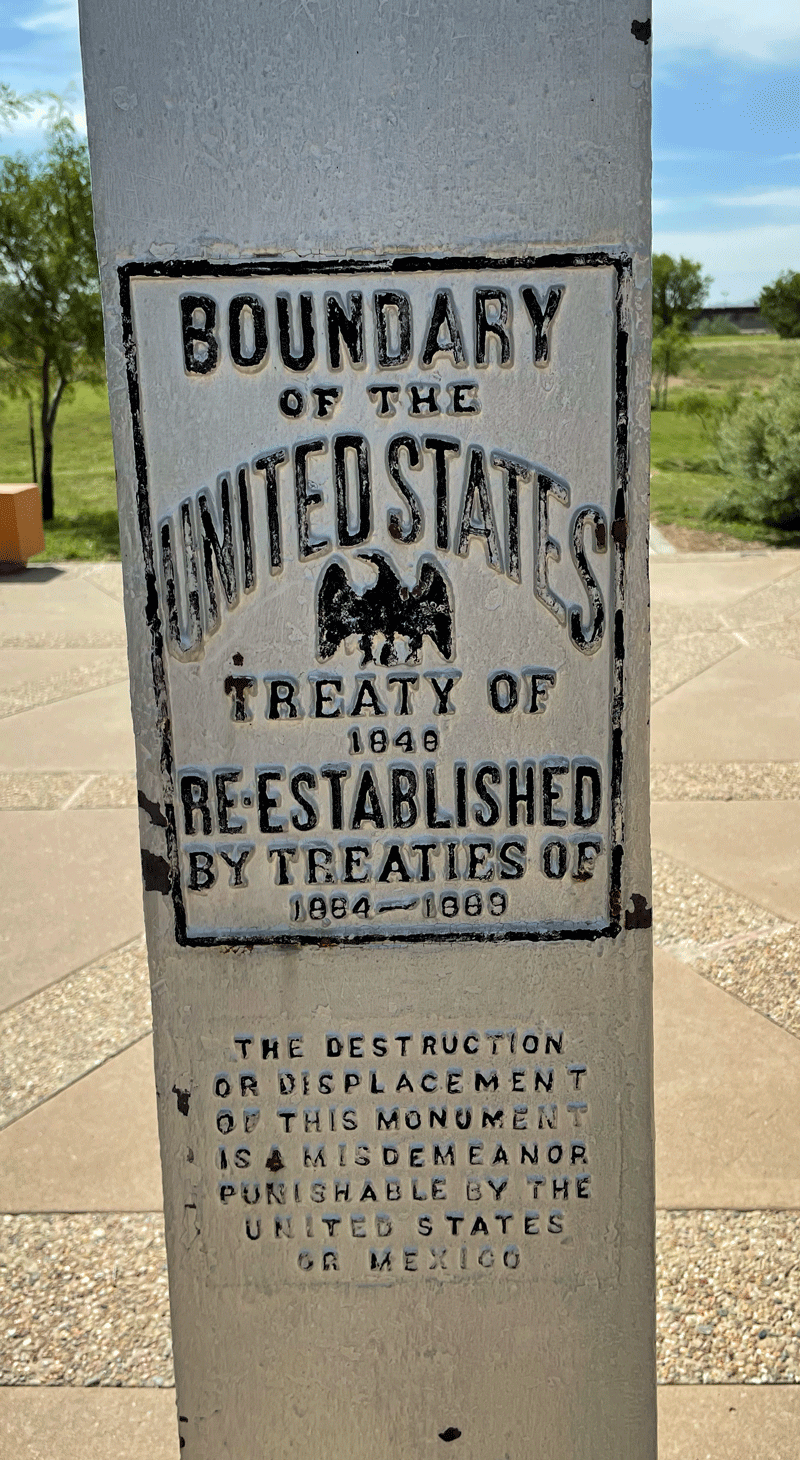
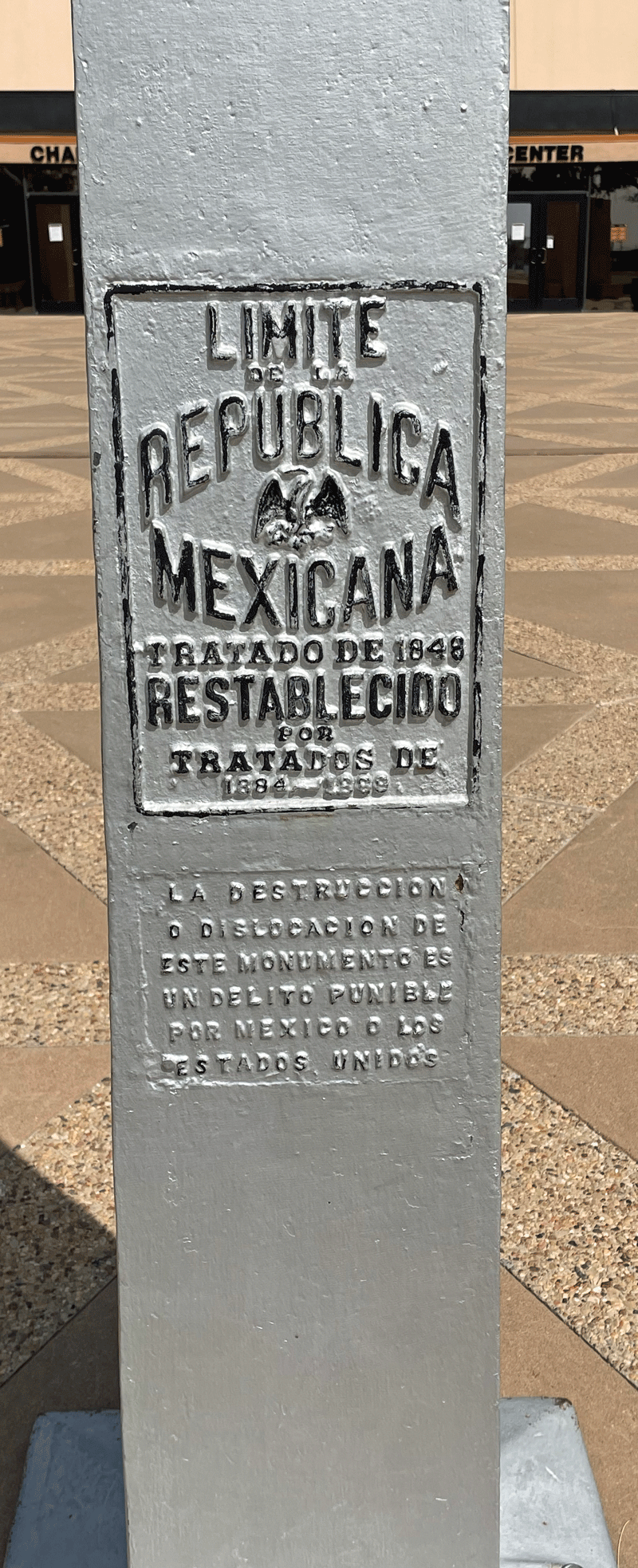
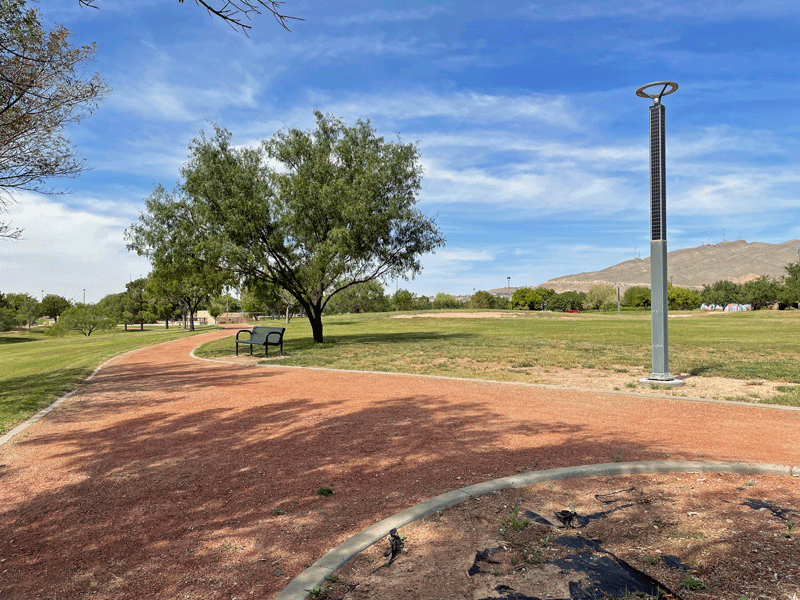
Bên ngoài khu công viên rất rộng và đẹp.
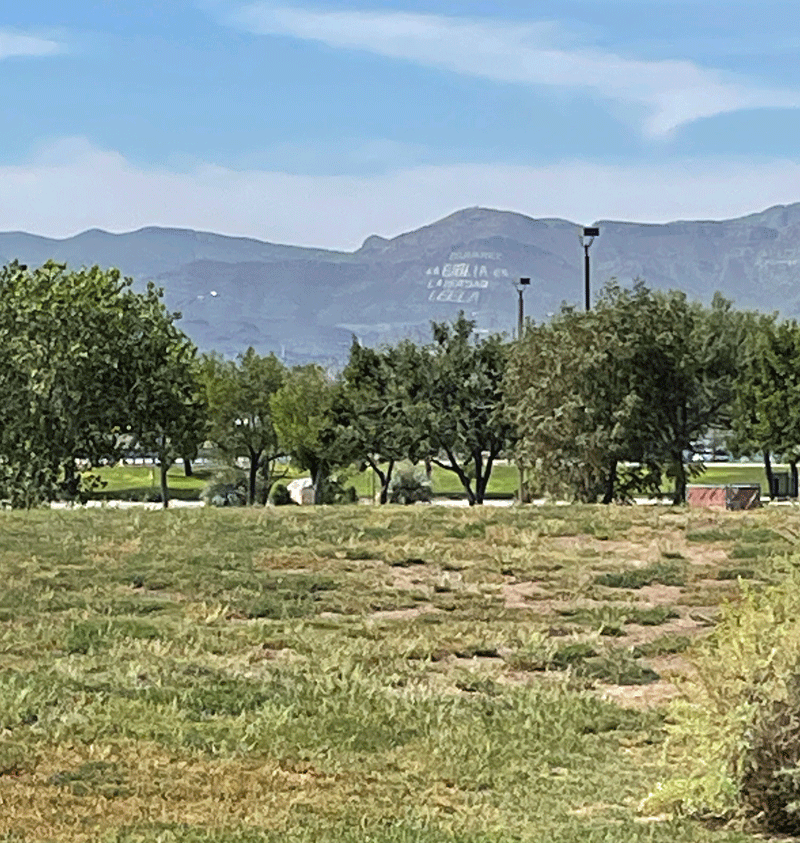
Nhìn dẫy núi bên kia là bên Mexico.
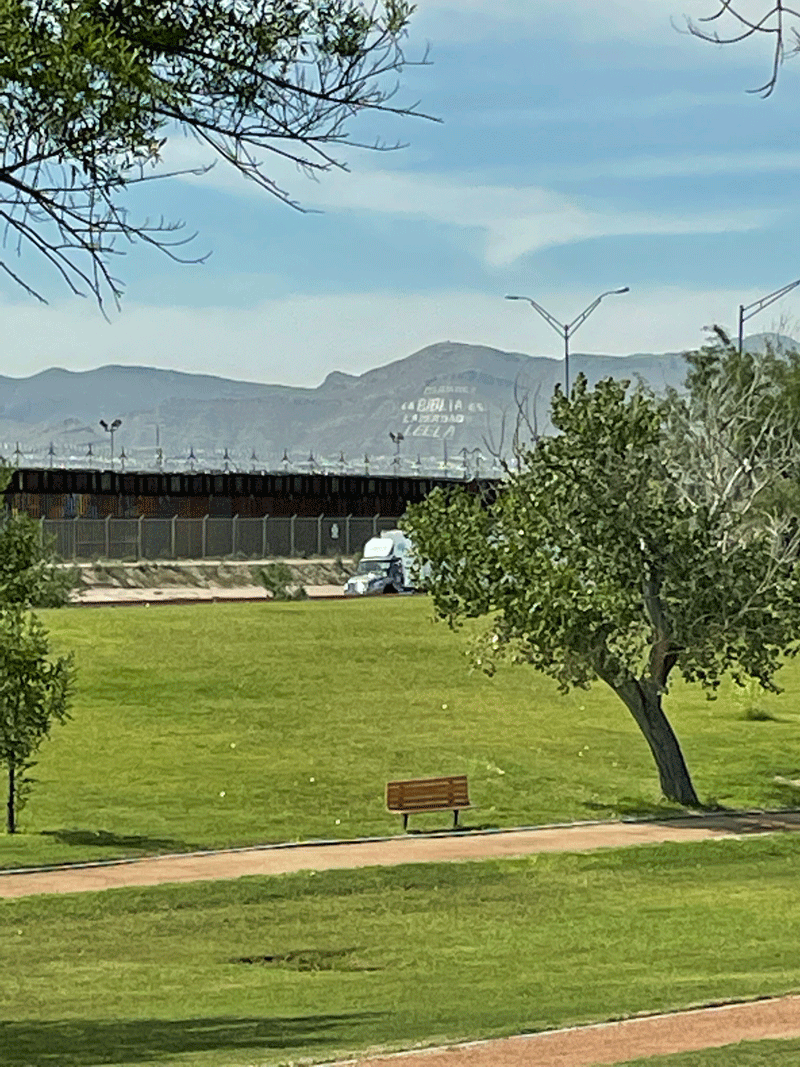
Bức tường màu đen là bức tường giữa hai biên giới. Xe đang chạy trên freeway sát bức tường.
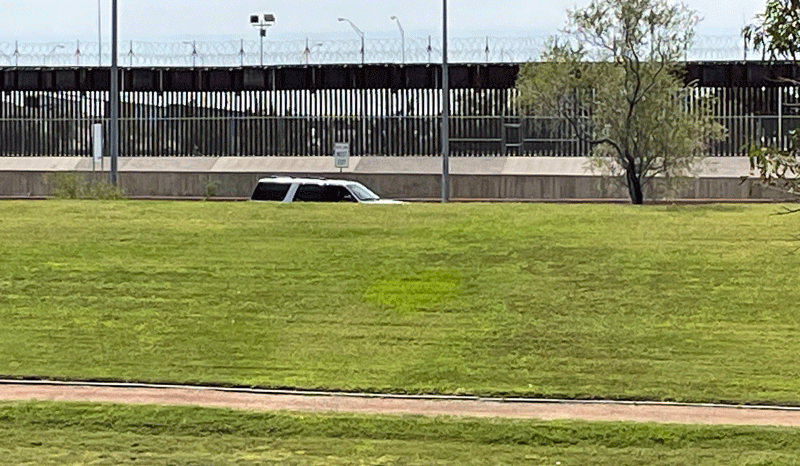
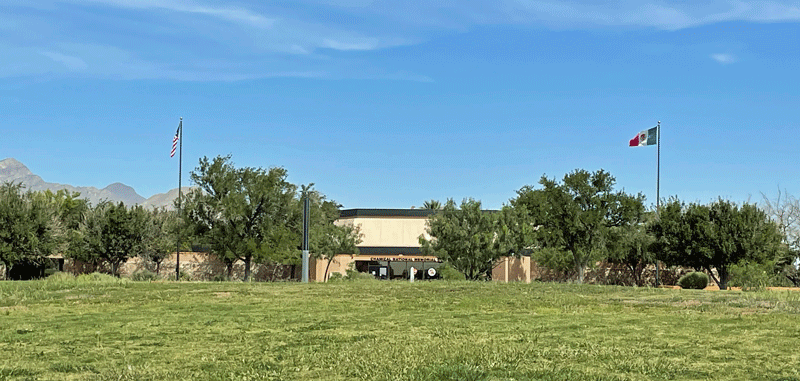
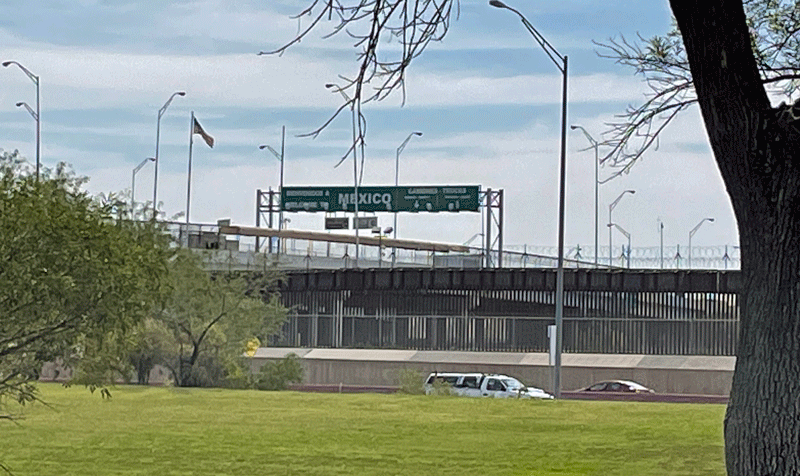
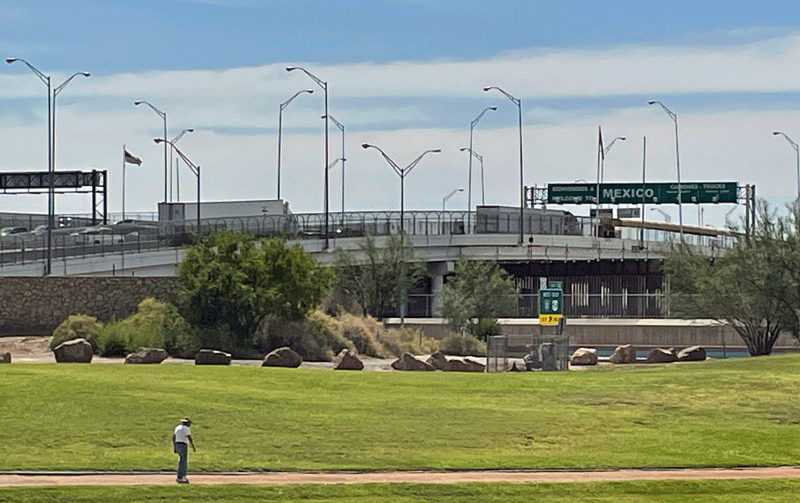
Từ công viên du khách có thể nhìn thấy cổng biên giới qua lại giữa hai nước.
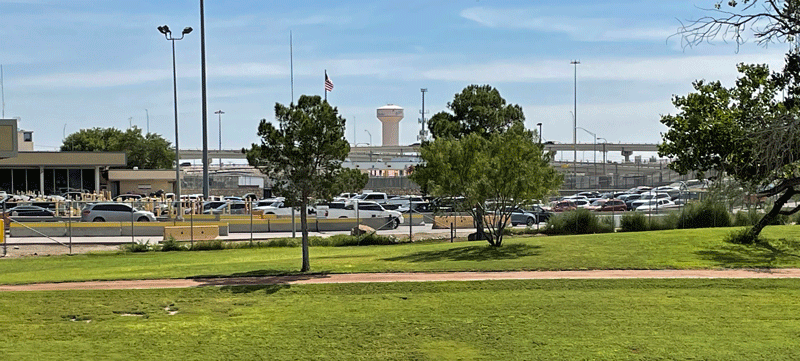
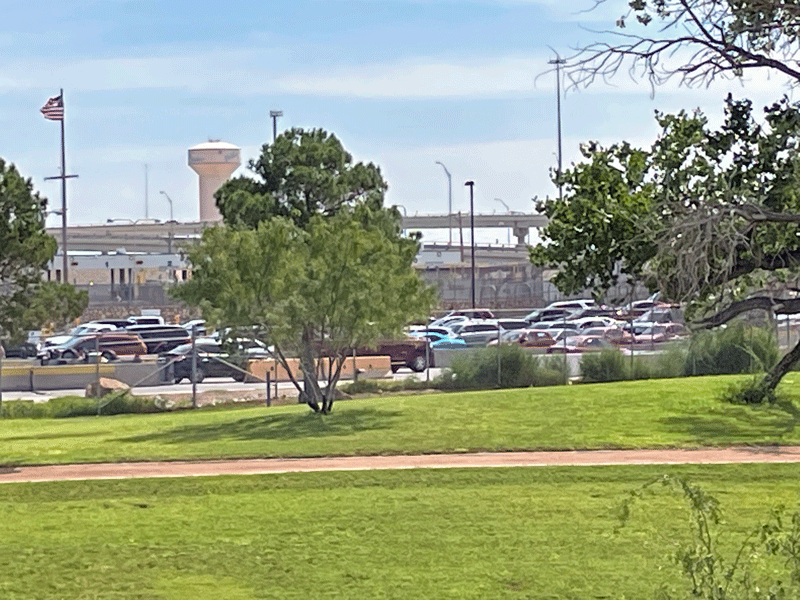
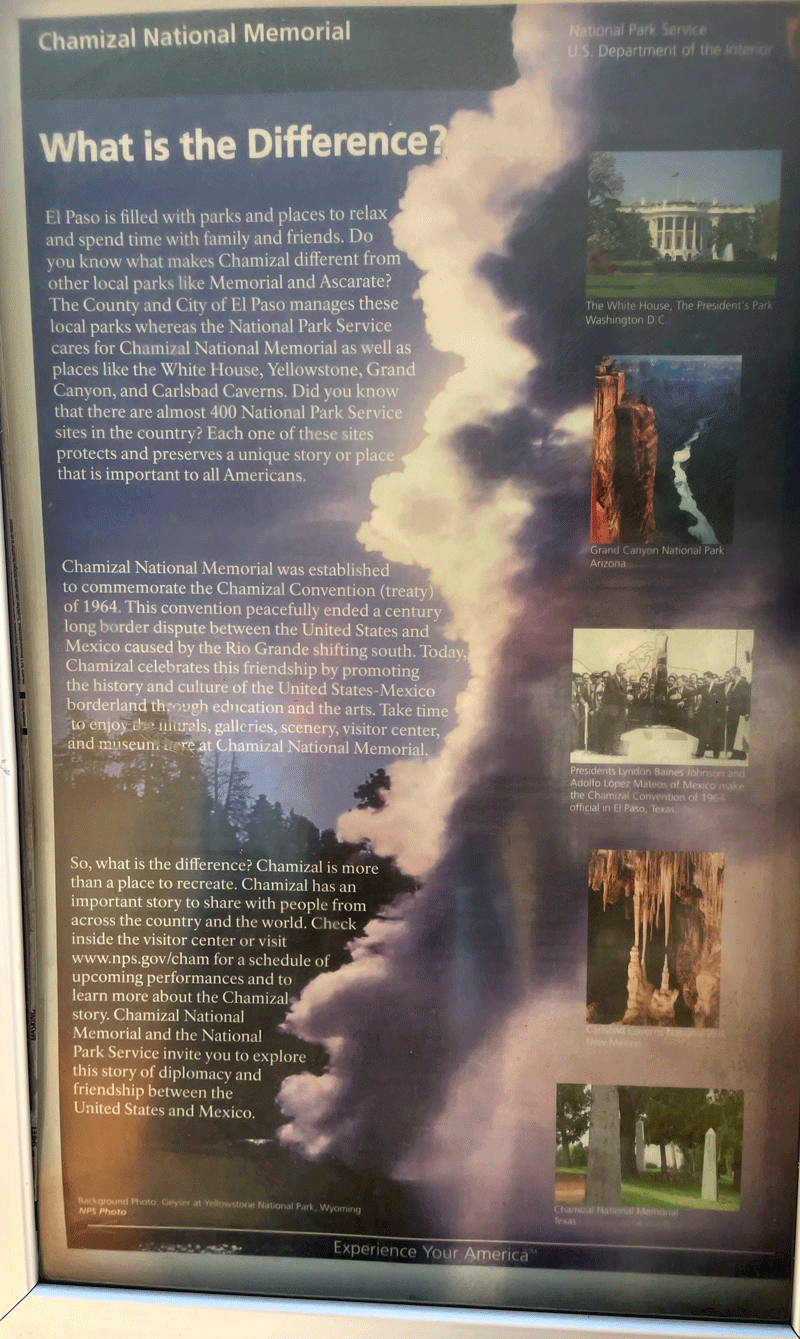
Mount Cristo Rey
Trên đỉnh núi này có tượng Chúa Giêsu Vua. Du khách có thể leo lên đây để chiêm ngắm và nhìn khung cảnh chung quanh bên dưới.
Nhưng không phải muốn đi bộ lên là được vì giới chức ở đây không bảo đảm cho sự an toàn và họ khuyên là muốn đi lên thì nên đi với group đông người, hay chờ các dịp lễ lớn sẽ có rất nhiều tín hữu hay dân chúng sẽ đi lên.
Từ chỗ đậu xe đi bộ lên tới đỉnh khoảng 2.5 miles và đường tuy lên dốc cũng dễ đi với độ dốc vừa phải và được cho là dễ đi.
Nói chung thì phần đông du khách chờ các dịp lễ lớn, hay đi chung group từ 4 hay 5 người trở lên. Lý do là vì vấn đề an ninh có thể bị cướp.
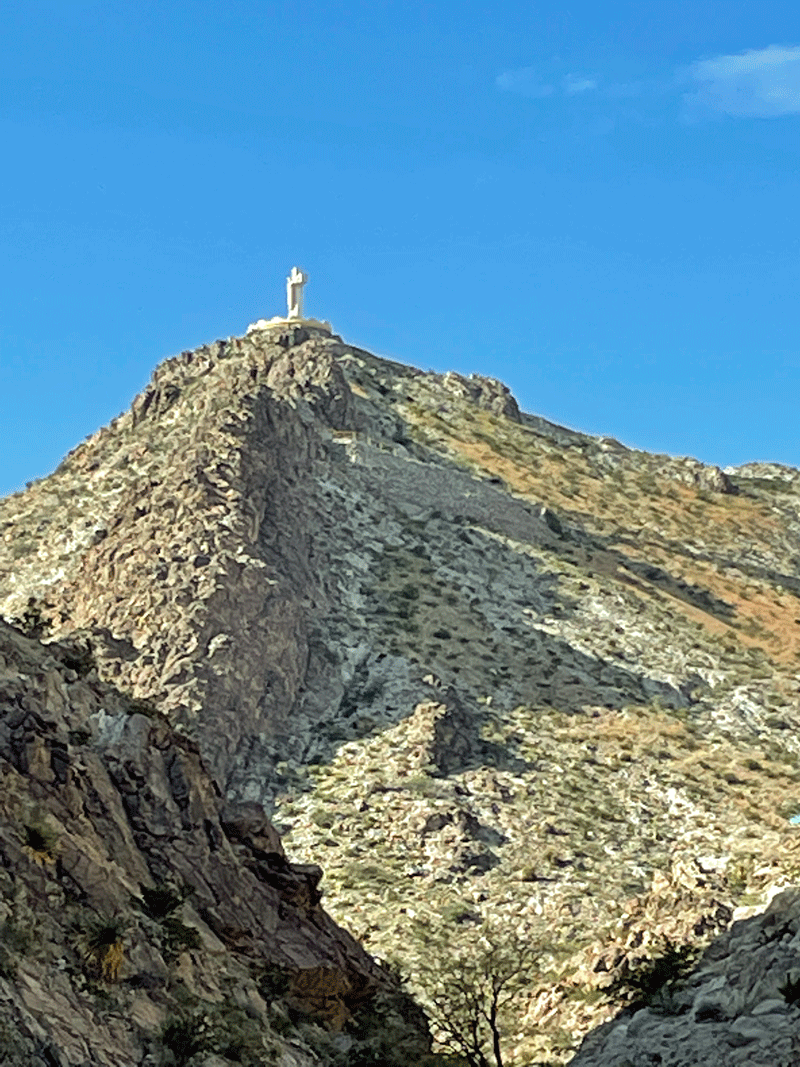
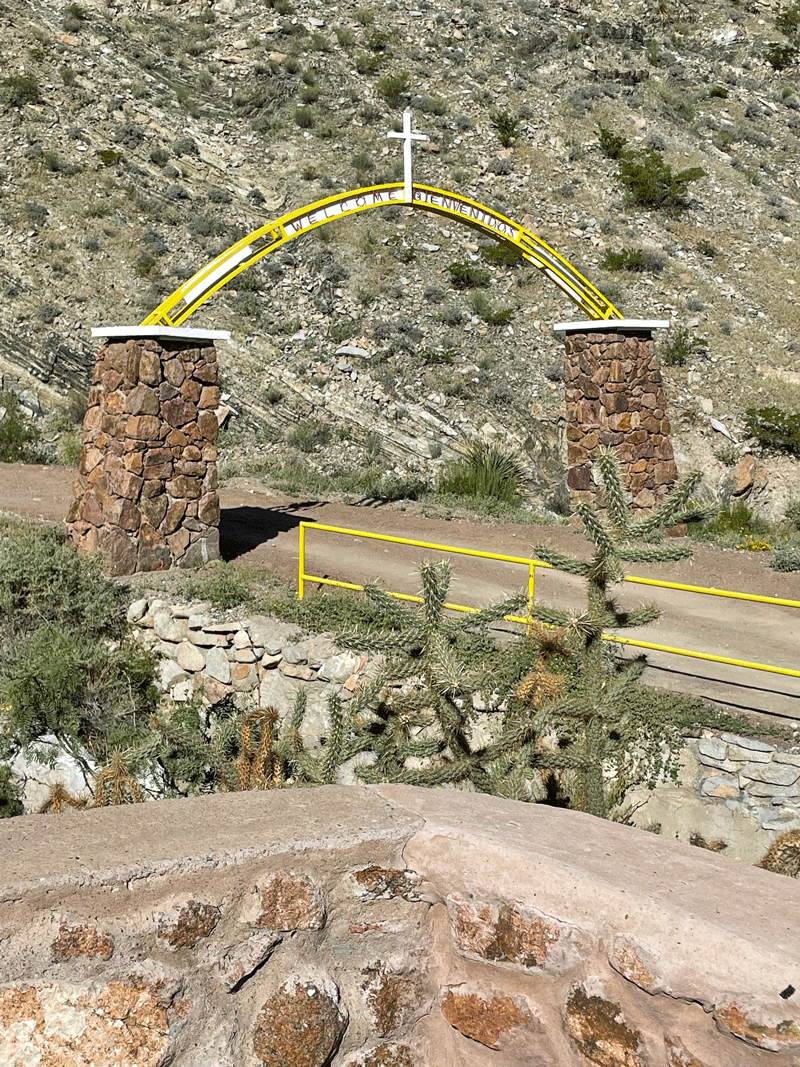
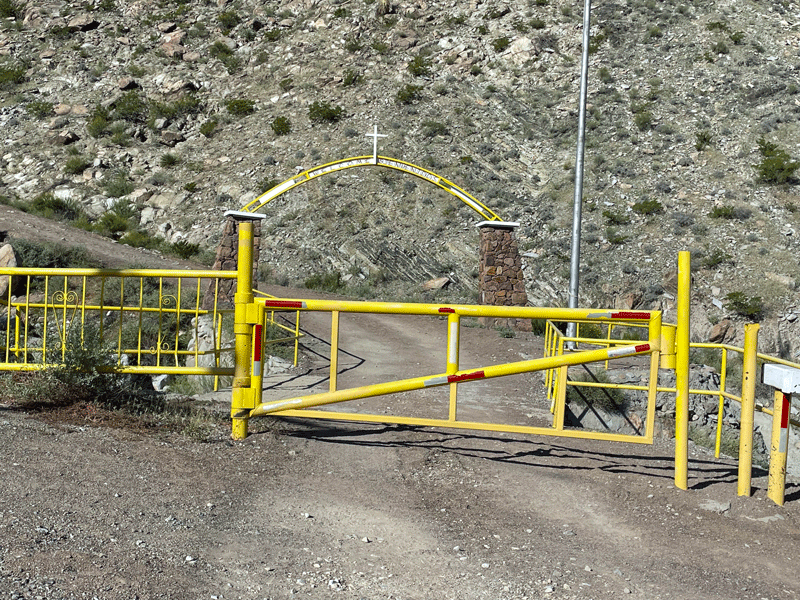
Du khách có thể tự mở cửa nhỏ bên tay phải đi vào.
Các hình bên dưới có tượng Chúa Giêsu Vua trên đỉnh núi.
.gif)
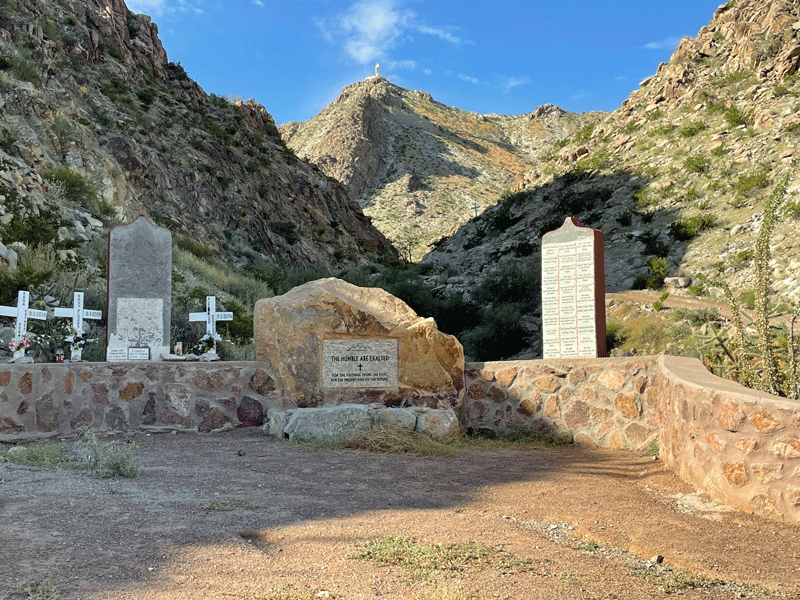
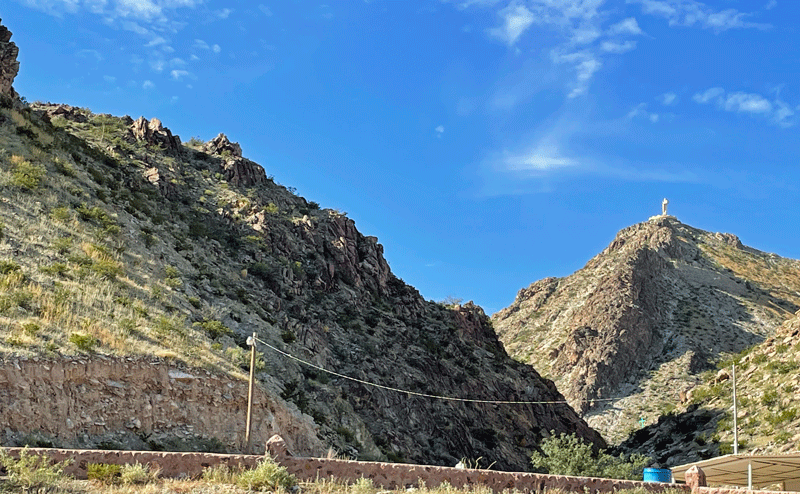
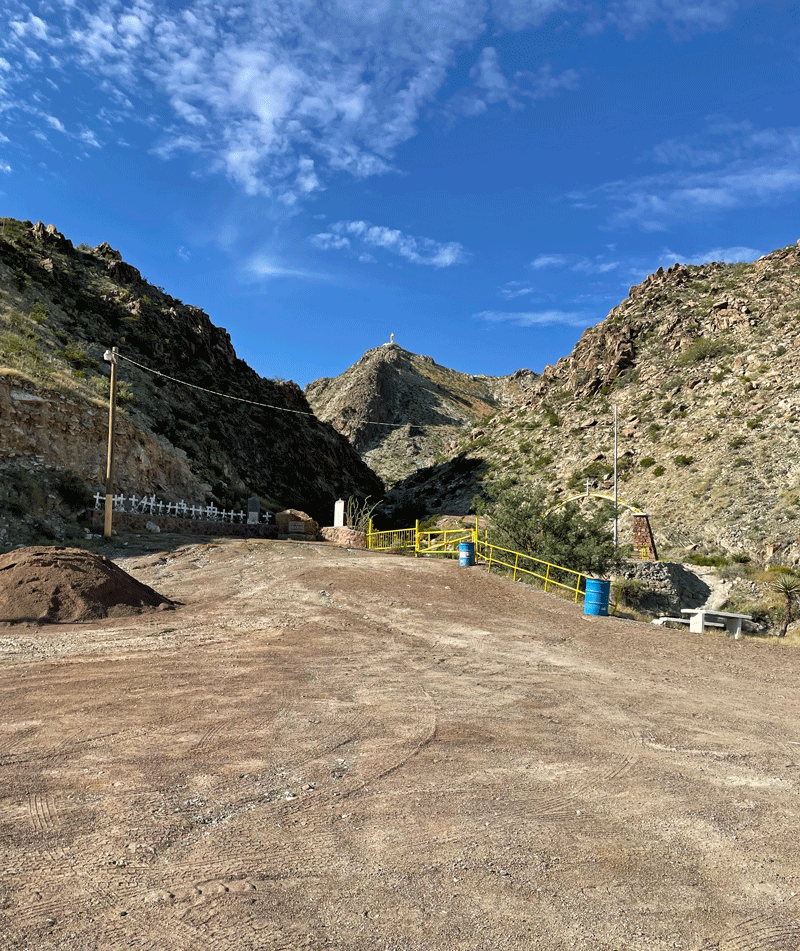
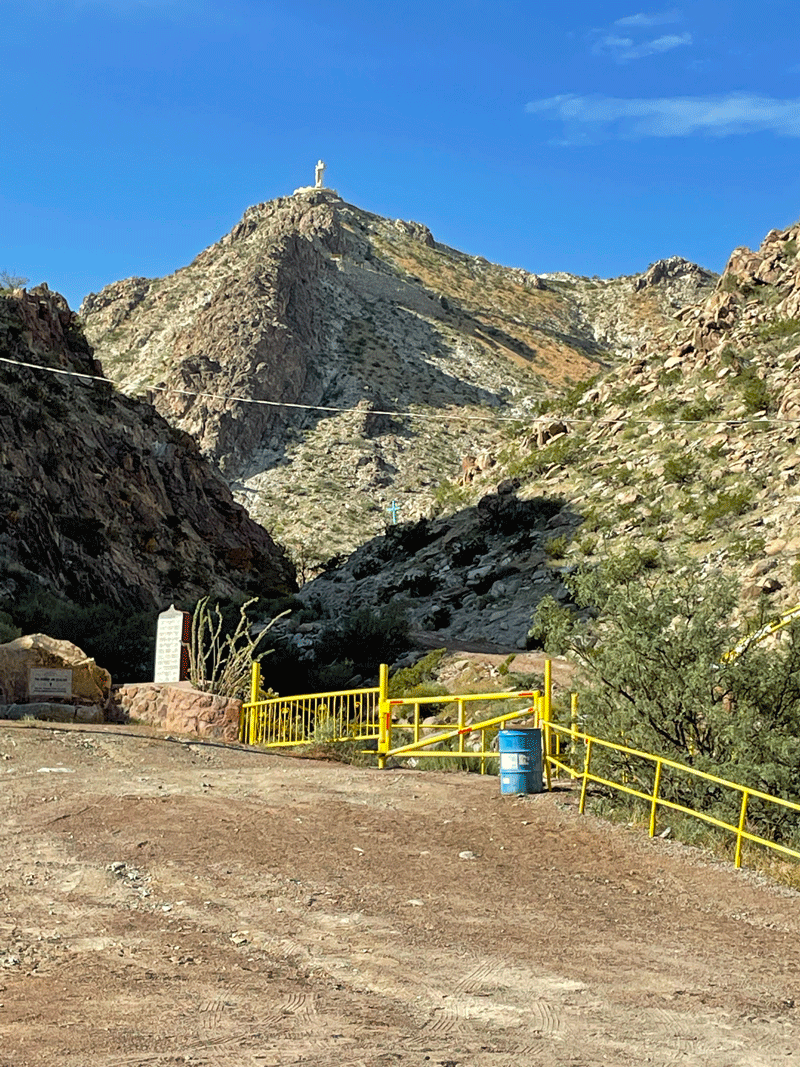
Theo trang web mới nhất về lịch sử của tượng Chúa và lời Warnings phía bên dưới.
Statue of Christ atop Sierra de Cristo Rey
History
Standing atop the Sierra de Cristo Rey (Formerly known as the Cerro de los Muleros, Mule Drivers Mountain), in Sunland Park, New Mexico, the 29 ft. tall limestone statue of Christ serves as a shrine to thousands of faithful in the El Paso and Southern New Mexico area. Dedicated in 1940, this monument to Christ was the vision of Fr. Lourdes Costa, a local parish priest, who in 1933 after looking out the back window of his residence in the community of Smeltertown, envisioned erecting a monument at the summit of this glorious mountain. With no knowledge of who owned the mountain or whether it was located in Texas, New Mexico or Mexico, Fr. Costa and sixteen others made the arduous trek on October 28, 1933. In church the following day, Costa preached to the congregation sharing his vision of a cross on the mountaintop. Together, they pledged to erect a temporary wooden cross and to later replace it with a monumental one. Additionally, they promised to volunteer their time and efforts to make the mountain suitable for ascension.
On October 31, Father Costa presented his idea to Bishop A.J. Schuler of El Paso, who approved.
Eventually, learning that the area is in present day Sunland Park, NM, almost 200 acres were purchased from the Commissioner of Lands of New Mexico by the Diocese of El Paso.
On the eve of lent, February 13, 1934, men carrying material on their shoulders and braving the hazardous climb over dangerous slopes placed the first cross. At sunset Father Costa blessed the twelve foot high wooden cross. The first step of one mans dream had been taken.
The work did not stop there. Having vowed to replace the temporary wooden cross, students at the Smelter Vocational School were working on an iron cross. While that was going on, men, women and children were all working, no less than three times a week for almost five years to help make the priest's dream a reality. Hundreds of people labored long and hard to build the two and one half mile road to make the future statue accessible. With the foundation built and the construction of the iron cross complete, on Palm Sunday a second procession was made, placing the larger and wider cross. It was blessed on March 25, 1934.
On August 31, 1937, Father Costa met with Bishop Schuler to suggest that his good friend, world famous sculptor Urbici Soler, be commissioned to construct the monument. Costa discussed the project with Soler, who was in Mexico City for an exhibition of his work. Bishop Schuler, having agreed to commission Soler, sent him money for his initial expenses. He arrived in El Paso on October 4, 1937.
While Costa devoted his time to financing the project, Soler was studying the site and making models of prospective ideas. A clay model made by Soler of his concept of the project was approved on December 7, 1937.
Soler left for Austin on April 1, 1938 to select almost forty tons of the finest limestone from their famous quarries. He cut and shaped the large stones himself as he prepared them for shipping. He began the trip back to El Paso in September. Upon his return, work began in earnest.
The base of the monument measures 14 feet wide and ten feet high. It was made to hold six inch by four inch memorial tile plaques made of Spanish Talavera with the names of contributors and sold for $25.00 each. The base was completed on May 15, 1939.
The first stone of the limestone statue was placed on May 24, 1939 by Urbici Soler. From then on, until its completion, he was on the scaffold from 4:00 AM to sunset everyday. The statue was ready in time for pilgrimage on October 29, 1939.
The crown that encircles the base of the monument was constructed and completed to coincide with the fiftieth anniversary on October 29, 1989.
For more information on upcoming events and dates when you can visit Mt. Cristo Rey, please check the Upcoming events page. Due to the proximity of Mexico on the Southern edge of the mountain, visitors are cautioned not climb alone and always go in groups. Vandalism, assaults and robberies are still an ongoing problem and visitors are encouraged to visit on days when organized events are being held and security is on site. Please visit the events page to get dates of upcoming events.
